Among the best kids’ TV shows in the 2000s are Samurai Jack, Courage the Cowardly Dog, Redwall, The Weekenders, Teen Titans, and Ed, Edd n Eddy.
These gems from a time period bridging the nostalgically rich 90s and the dazzling newness of the 2010s are often overlooked, but they represent a wealth of value in children’s programming.
Each of these shows is not simply a source of amusement or an endearing snapshot of life; they offer a balanced mix of educational content and life lessons, delivered in an engaging manner that not only entertains but also aids young viewers in navigating the vastness of our world.
Best Kids Shows Of The 2000s
While it’s undeniable that a number of kids shows are blatantly commercial, the best ones manage to avoid feeling like mere advertisements. Even the wackiest of these shows ought to possess a touch of nutritious substance amidst the sweet allure — maybe a distinctive twist that sets it apart.
A pinch of educational lessons? Marvelous! But let’s not lose sight of the fact that TV should not be solely about imparting knowledge, whether to adults or children.
LazyTown ( 2004 – 2014)
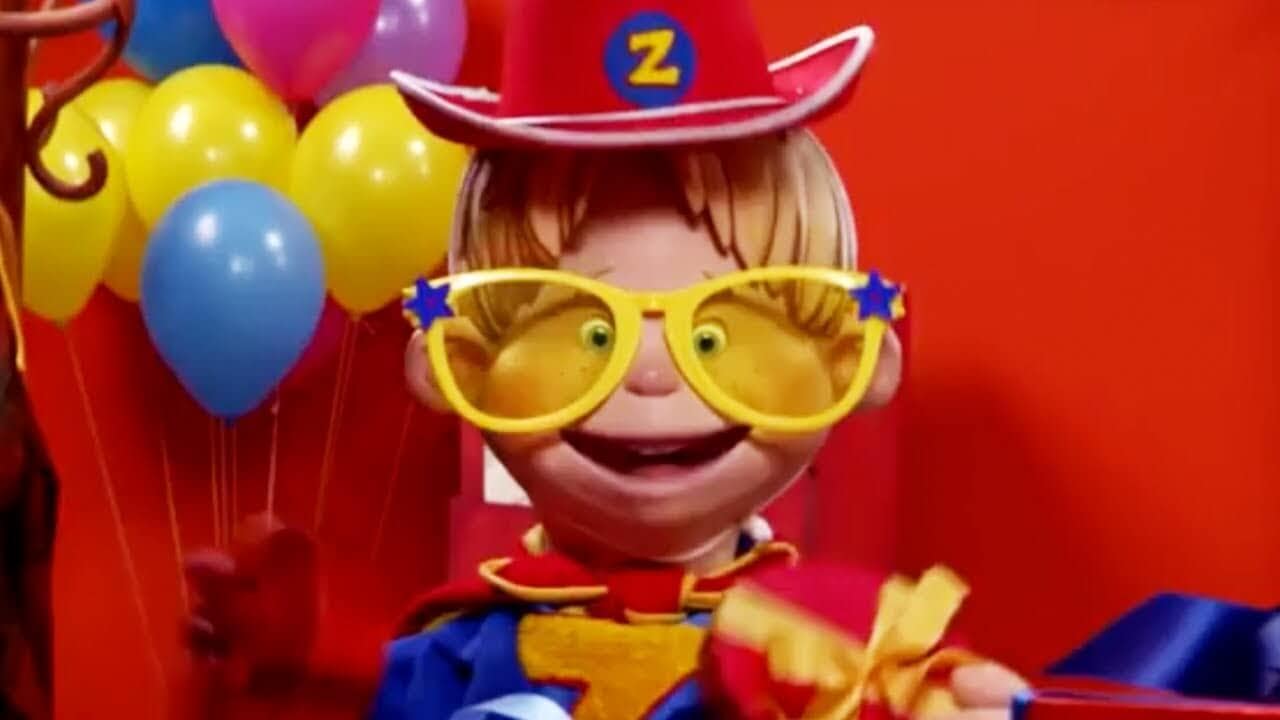
“LazyTown” debuted in 2004, creating a visually unique experience by integrating real-life puppetry, CGI, and real-life actors, two years following the production of an unaired pilot episode. The show continued to entertain audiences for four seasons.
While adult audiences today may not find as much to enjoy, The Guardian acclaimed the show for its efforts to inspire physical activity among its viewers. Many people who watched the series as it aired have held onto fond memories of it. The performances of the vibrant characters underscore the show’s light-hearted ambiance, with fans cherishing the late Stefán Karl Stefánsson’s performance as the series antagonist, Robbie Rotten, in particular.
Dragon Tales (1999 -2004)
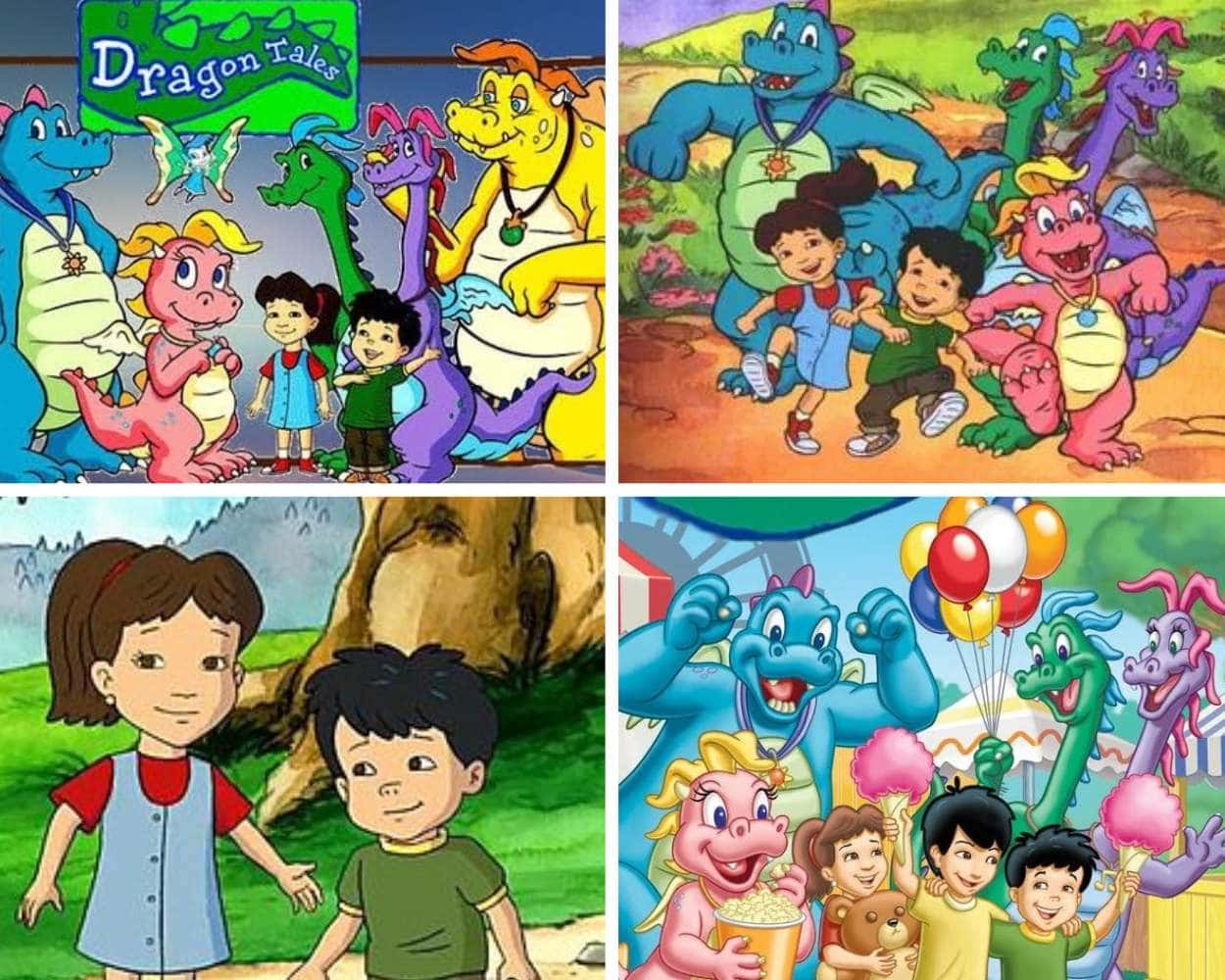
“Dragon Tales” first aired on PBS in 1999, delivering the fantasy genre to younger audiences in a striking way through its episodes released until 2005. The show features siblings Max and Emmy, and later their next-door neighbor Enrique. This trio uses a magical dragon scale to transition between our familiar world and a realm completely inhabited by dragons, befriending numerous characters in the whimsical world where most of the series unfolds.
Aligning with the ethos of most PBS shows, “Dragon Tales” prioritizes education, specifically targeting younger viewers. The series accomplishes this by imparting lessons about honesty and hard work, in addition to more explicit lessons on basic math and language skills.
Hamtaro

The animation studio renowned for unexpectedly delivering cult classic films like “Akira” also produced the innocent cartoon “Hamtaro,” centered around an adorable hamster. The creators adapted “Hamtaro” from a manga series bearing the same name, showcasing a Japanese slice of life narrative featuring the eponymous hamster.
“Hamtaro,” unsurprisingly, earned immense success in Japan, yet it failed to gain significant traction in the United States. Despite this, it boasted six seasons and a variety of companion films and games, all centered around the cartoonishly cute Hamtaro, meriting perhaps more attention than it received.
The Proud Family ( 2001 – 2005)
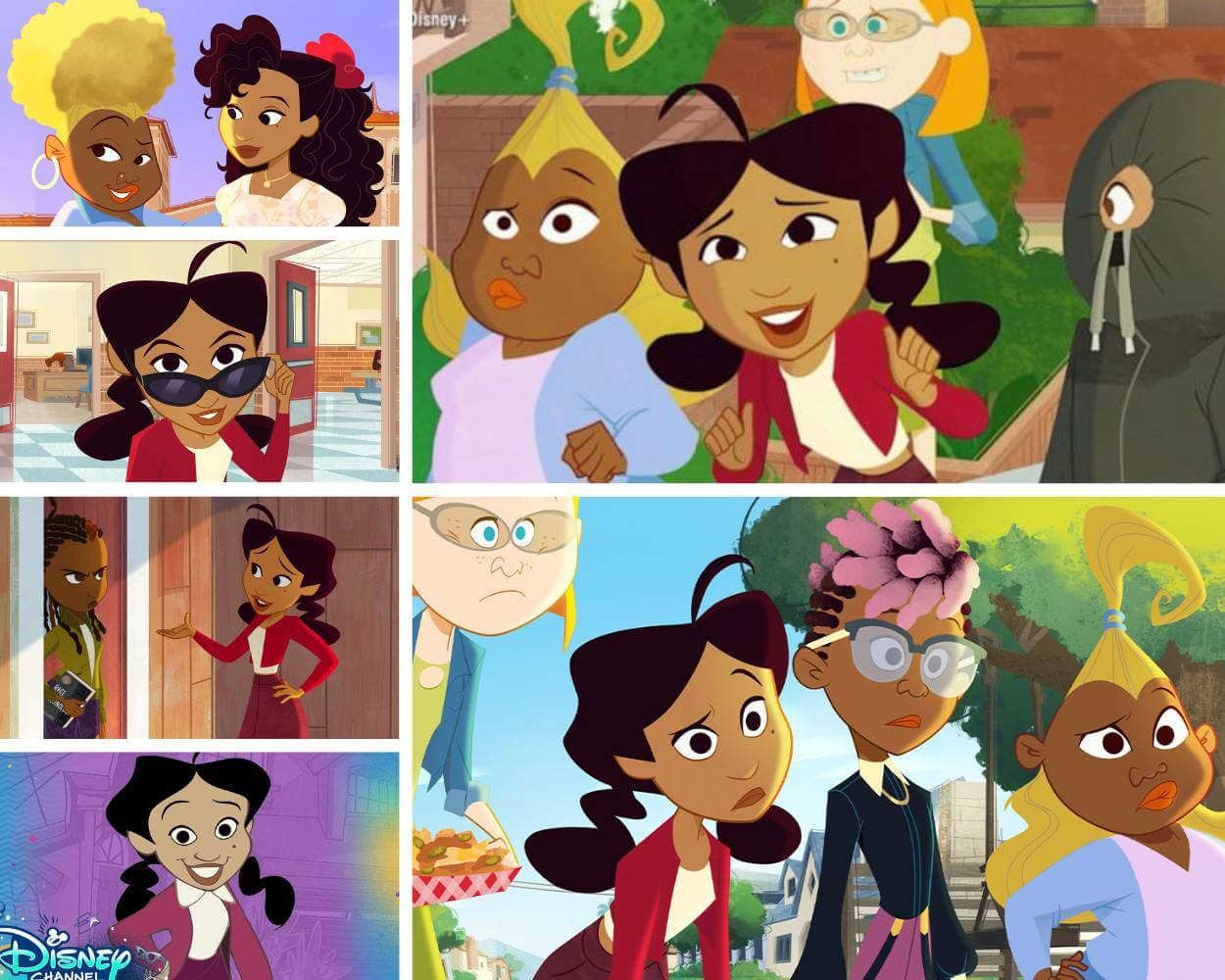
“The Proud Family” narrates a coming-of-age story revolving around Penny Proud, the eldest child in the endearingly awkward Proud family. The plot involves Penny’s family members and several characters from her daily life who often test the positive morals and life lessons that her family instilled in her.
“The Proud Family,” now over two decades old, remains fondly remembered by audiences since its original airing, even earning a revival. “The Proud Family: Louder and Prouder,” premiered in February 2022, resurrecting the iconic family’s various misadventures and returning many of the original cast members to their roles.
Clifford the Big Red Dog ( 2000 – 2003)
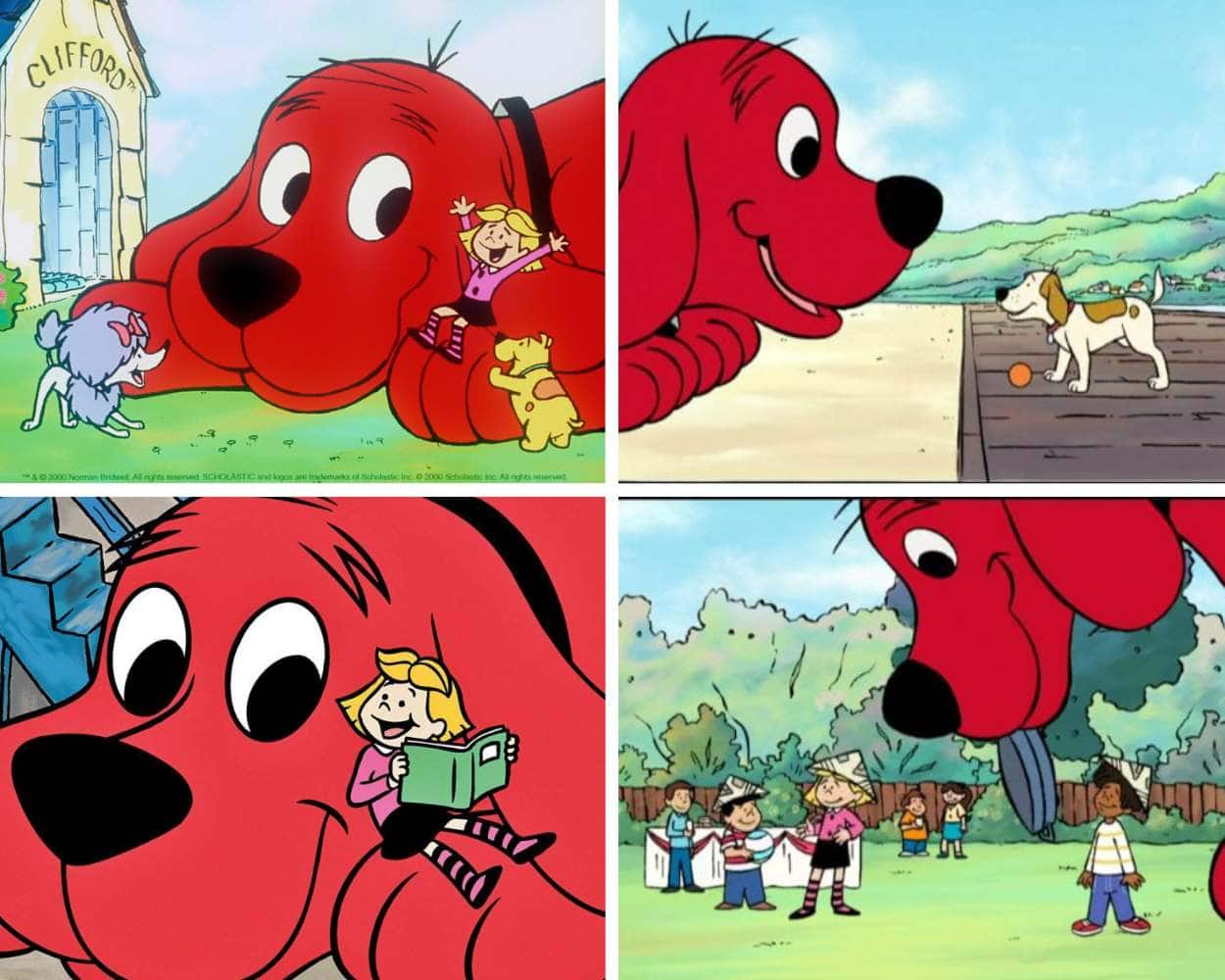
Drawing inspiration from a classic children’s book series bearing the same name, the original “Clifford the Big Red Dog” cartoon debuted in 2000. While explicitly aimed at a younger audience, the sight of Clifford, the giant, fire-engine red dog trying to navigate a world that resembles a dollhouse to him, still manages to bring joy even to adults.
The educational series, featuring Clifford and his owner Emily Elizabeth Howard, seeks to teach young children basic lessons on a myriad of topics. Though the original series concluded in 2003, a prequel named “Clifford’s Puppy Days” launched soon after, running for two seasons, followed by a recent live-action film.
Camp Lazlo
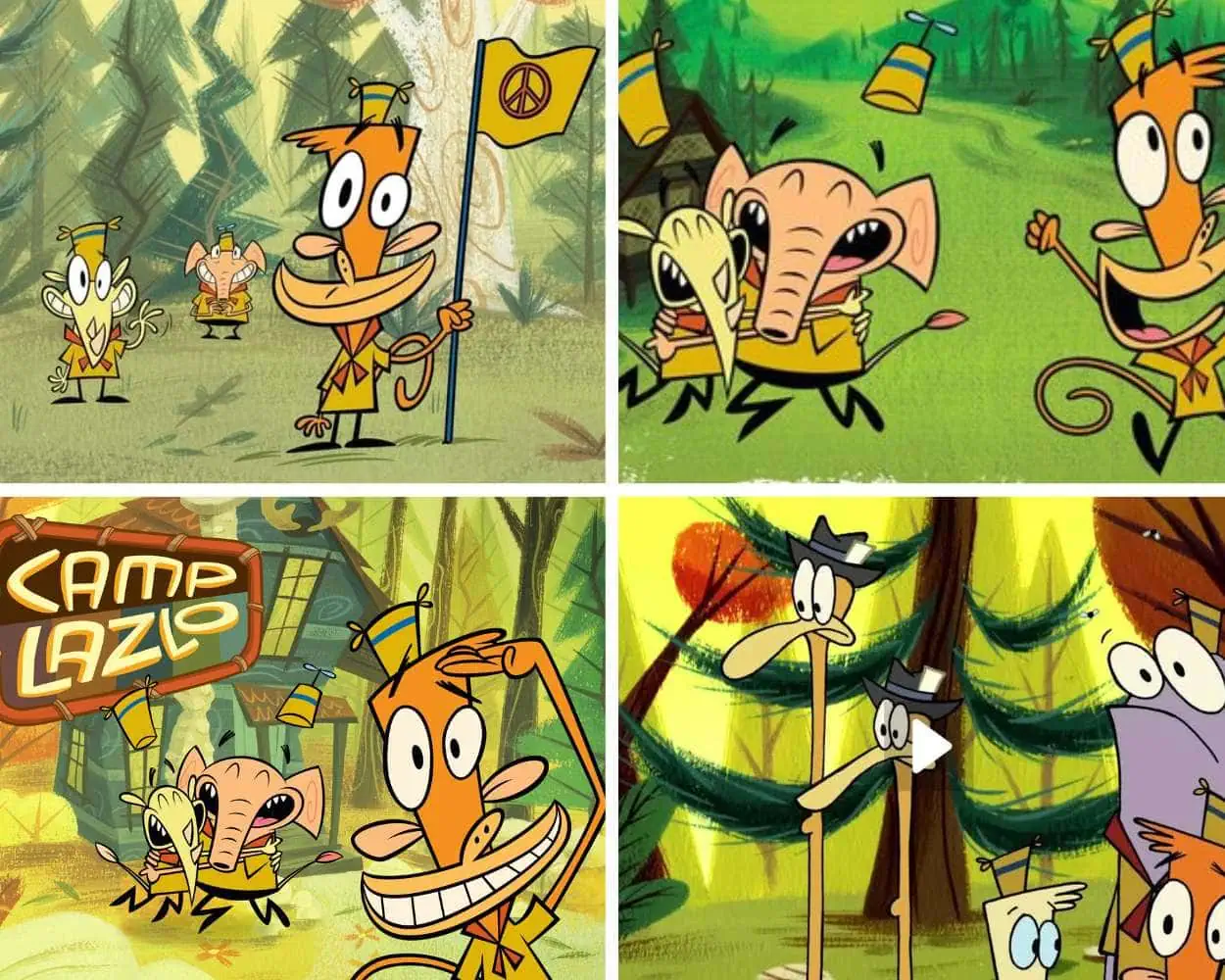
Joe Murray, after contributing to the quirky ’90s favorite “Rocko’s Modern Life,” created the equally eccentric series “Camp Lazlo.” The series made its first appearance on Cartoon Network in 2005 and maintained a commendable run for five seasons until its conclusion.
Set in a summer camp as the title suggests, “Camp Lazlo” features a broad cast of eccentric animal characters and their counselors. The unpredictable antics that have become Murray’s signature fill the show, culminating in a truly bizarre twist ending to the series.
ChalkZone
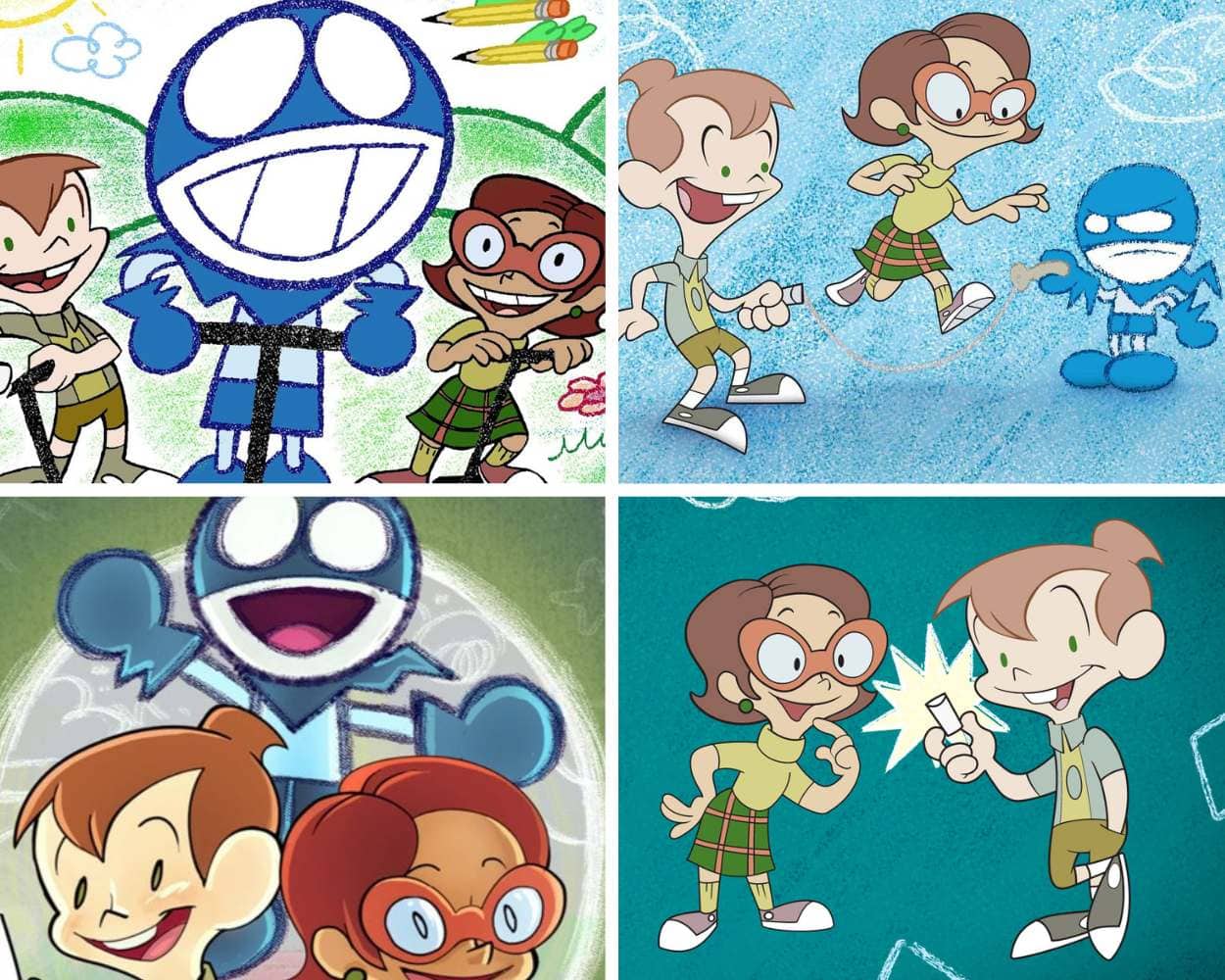
Undeniably one of the more underrated cartoons of the 2000s, “ChalkZone” began its four-season run in 2002 but remained largely unnoticed. This Nickelodeon cartoon revolves around a young boy often at odds with most of his school. His life takes a turn when he discovers a magical piece of chalk that transports him to another world, where he embarks on adventures with his best friend.
Whether revisiting it with nostalgia or exploring it for the first time, it’s hard to deny the limited appeal to older viewers. Nonetheless, it’s worthwhile to appreciate the series for its fun art style and its quirky character.
Catscratch
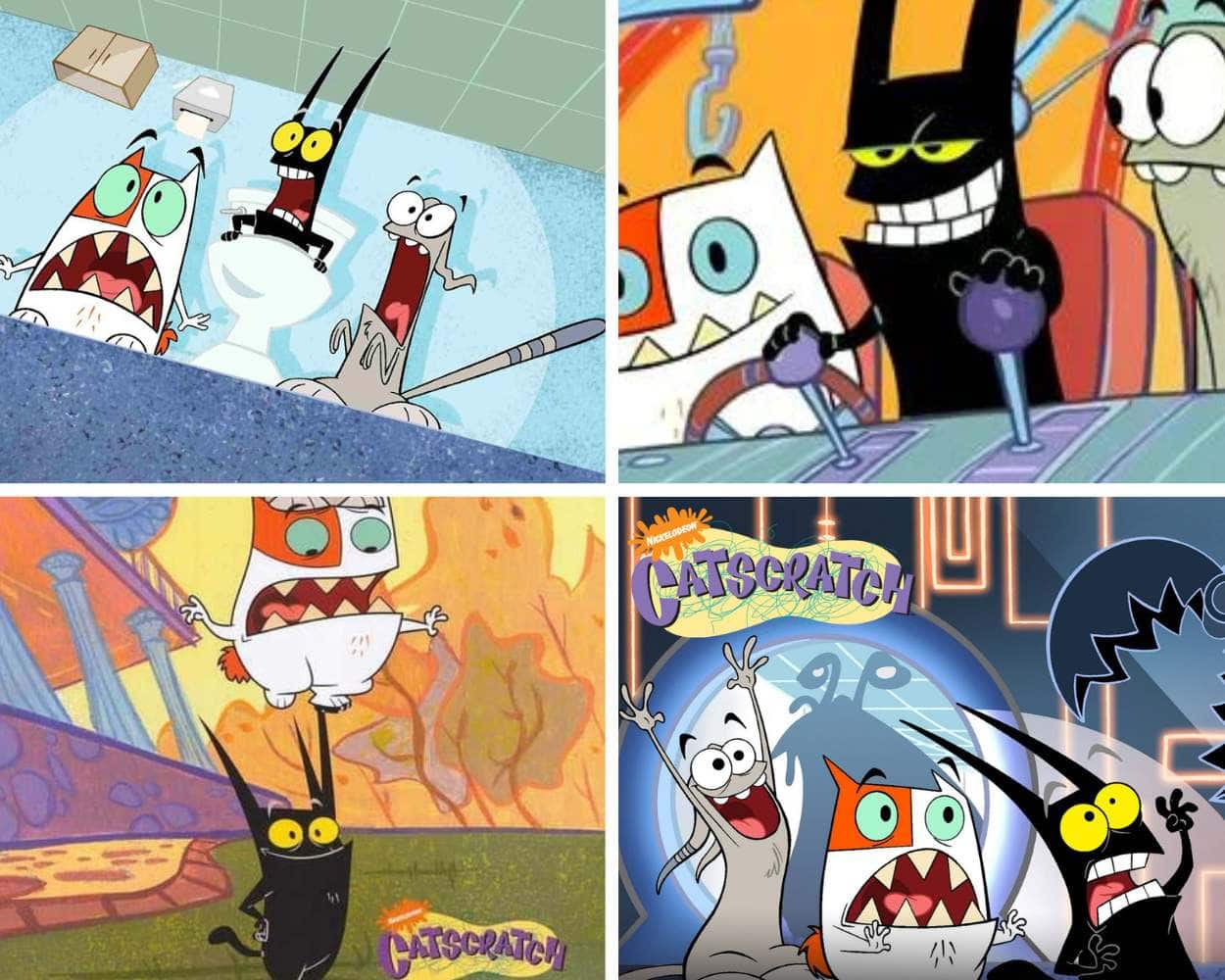
When a wealthy elderly woman dies, she bequeaths her three dimwitted cats a massive fortune, a mansion, and, unexpectedly, a monster truck. This humorously dark scenario triggers the events in “Catscratch,” leading to a series bursting with cartoonish, absurd humor and slapstick comedy.
“Catscratch” made its debut in 2005 and aired only 20 episodes in one season before its cancellation. Although it’s not the best children’s show from that decade, it’s certainly a unique show that would have been intriguing to see develop further in its peculiar direction.
Sagwa, the Chinese Siamese Cat
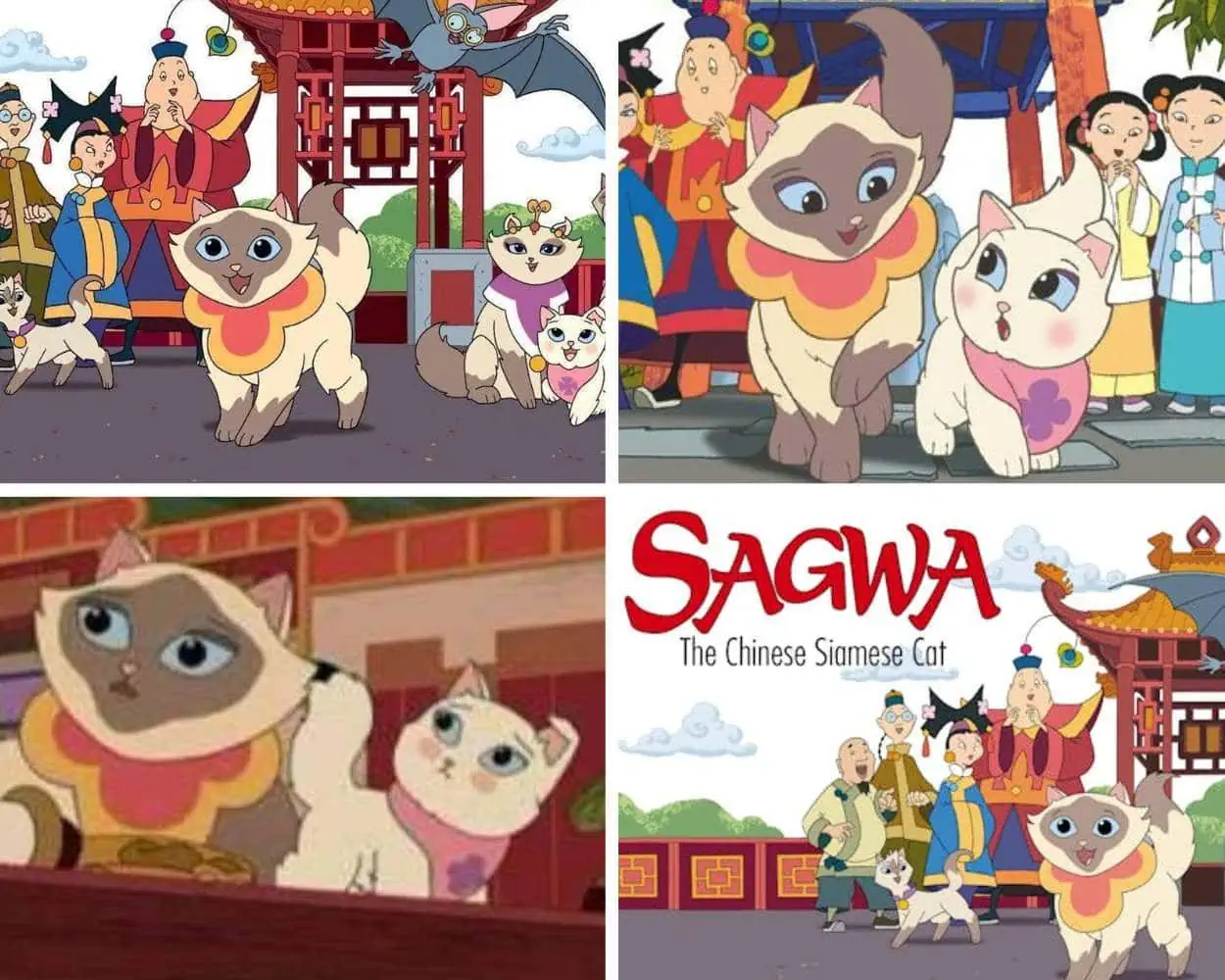
“Sagwa, the Chinese Siamese Cat” commendably portrays 19th-century Chinese culture, a theme seldom explored in Western children’s shows. Although it only ran for one season, it introduced a myriad of characters, leaving a mark on its viewers.
The series focuses on Sagwa, a middle kitten in a family of scribes for a Chinese royal family, balancing between her baby sister and assertive older brother. Through a series of adventures, she imparts important lessons about morality and character strength.
The Adventures of Jimmy Neutron, Boy Genius
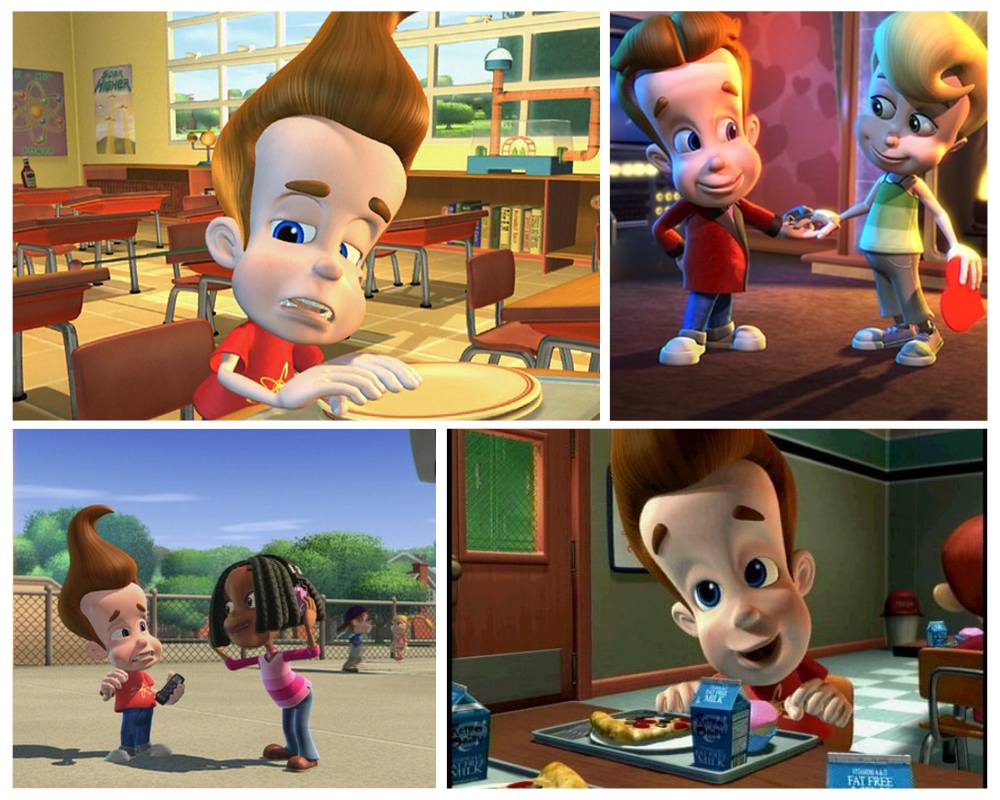
“The Adventures of Jimmy Neutron, Boy Genius” follows the extraordinary life of inventor Jimmy Neutron and his friends Sheen and Carl, as they encounter unique villains.
This quirky, now-outdated 3D animated series has left a lasting impression on its young viewers. Rather than starting with a TV series, the creators launched with the 2001 film “Jimmy Neutron: Boy Genius,” setting the stage for the beloved three-season series that began in 2002.
Danny Phantom
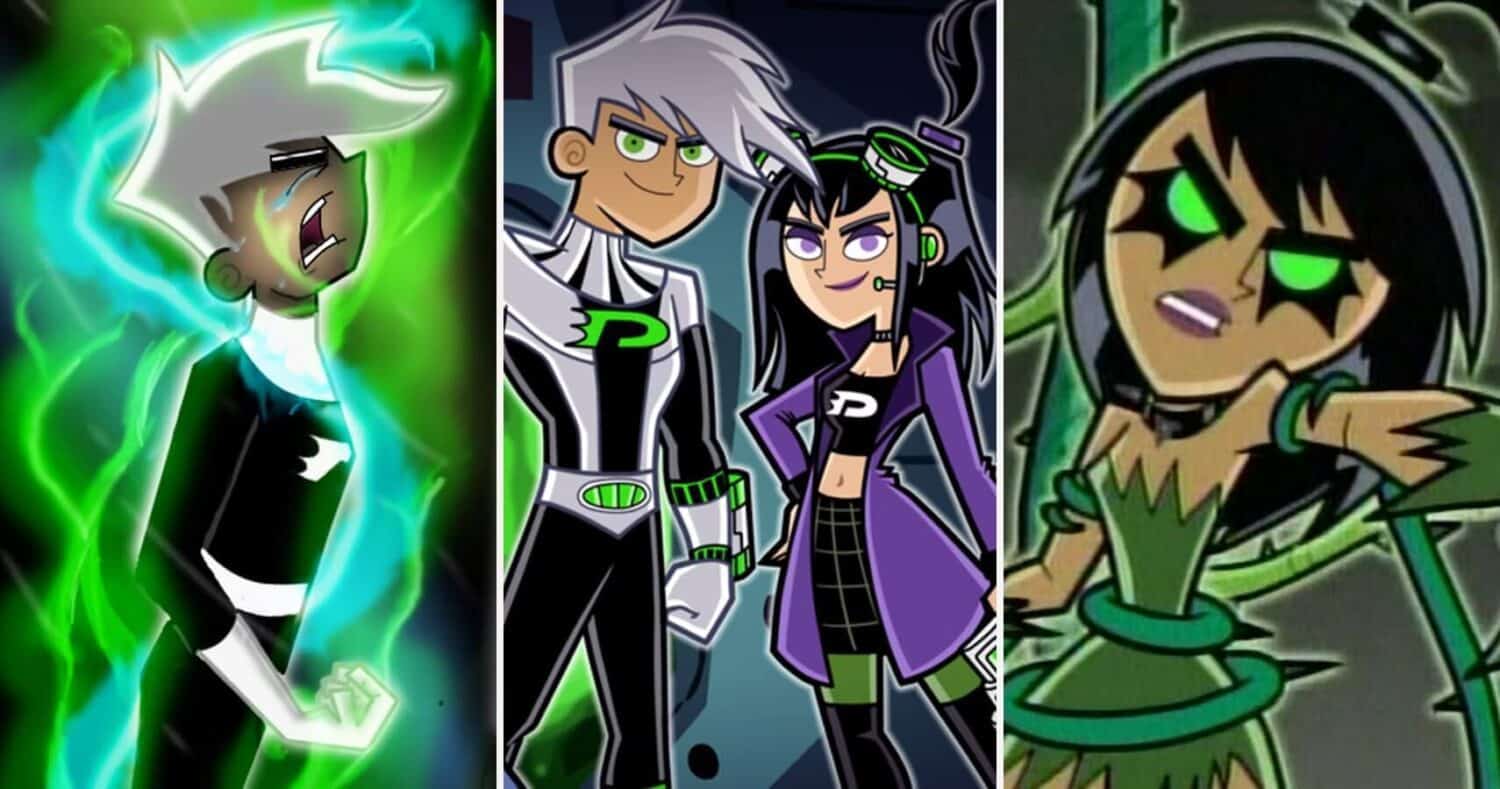
A few years after co-creating “The Fairly Odd Parents,” Butch Hartman incorporated elements of the paranormal to create the action-adventure series, “Danny Phantom.” Decider praised the three-season Nickelodeon series as “ahead of its time.”
“Danny Phantom” stood out for its emphasis on story continuity, with characters having varied arcs over multiple episodes. The series follows 14-year-old Danny Fenton who, after tampering with his parents’ supernatural tech, gains ghostly powers and battles foes between the worlds of the living and the dead.
As Told by Ginger
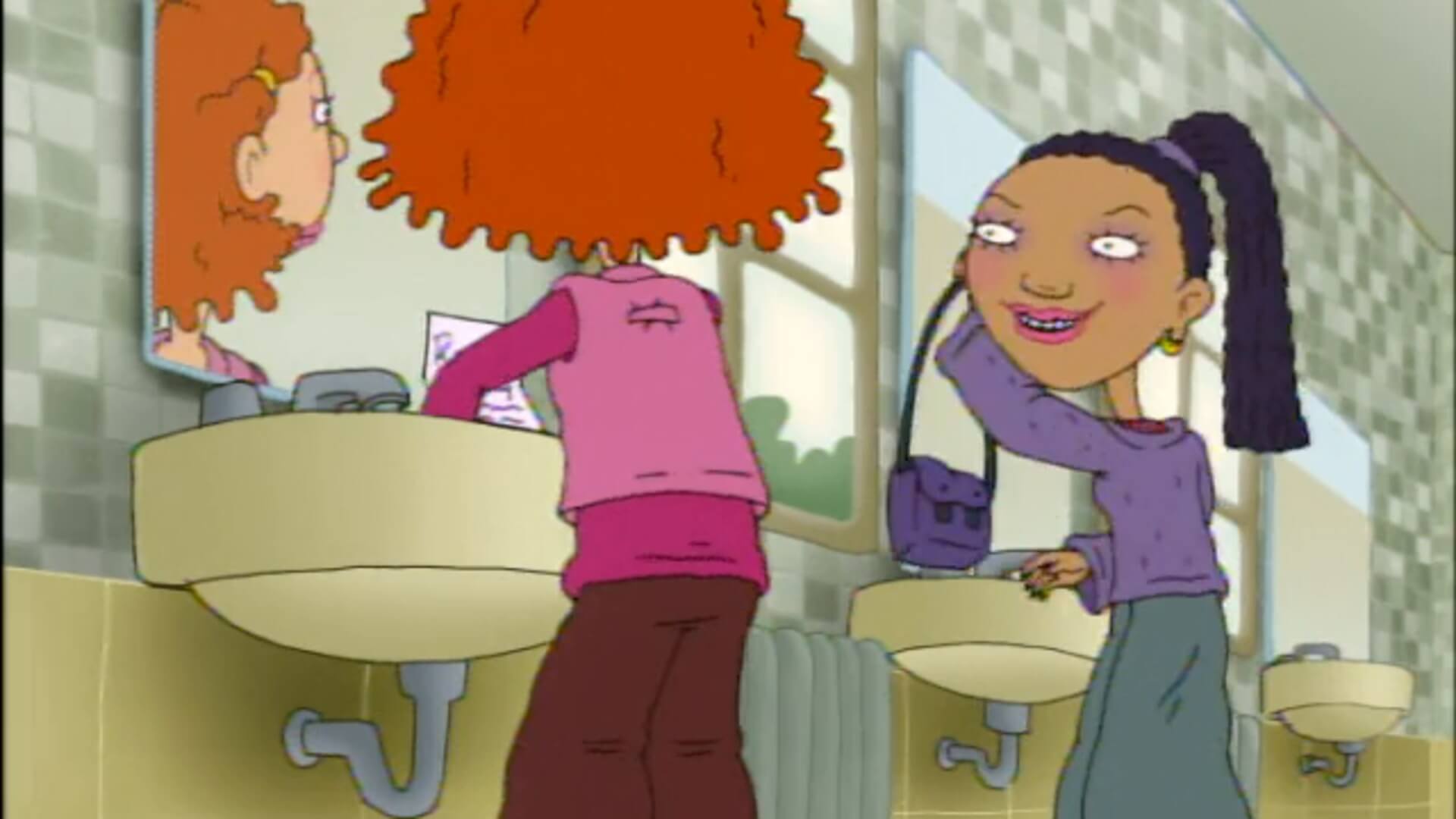
Klasky Csupo, the animation studio behind “Duckman” and early “The Simpsons,” produced and animated “As Told by Ginger” throughout its six-year run starting in 2000. Drawing heavily from “Rugrats” in terms of art style, this series, featuring older demographics, delivers stories from a younger perspective.
The series stands out for its unique continuity in narrating the trials of a socially awkward preteen, Ginger Foutley, and portraying realistic, relatable changes in its characters for both its target audience and older viewers.
The Fairly Oddparents
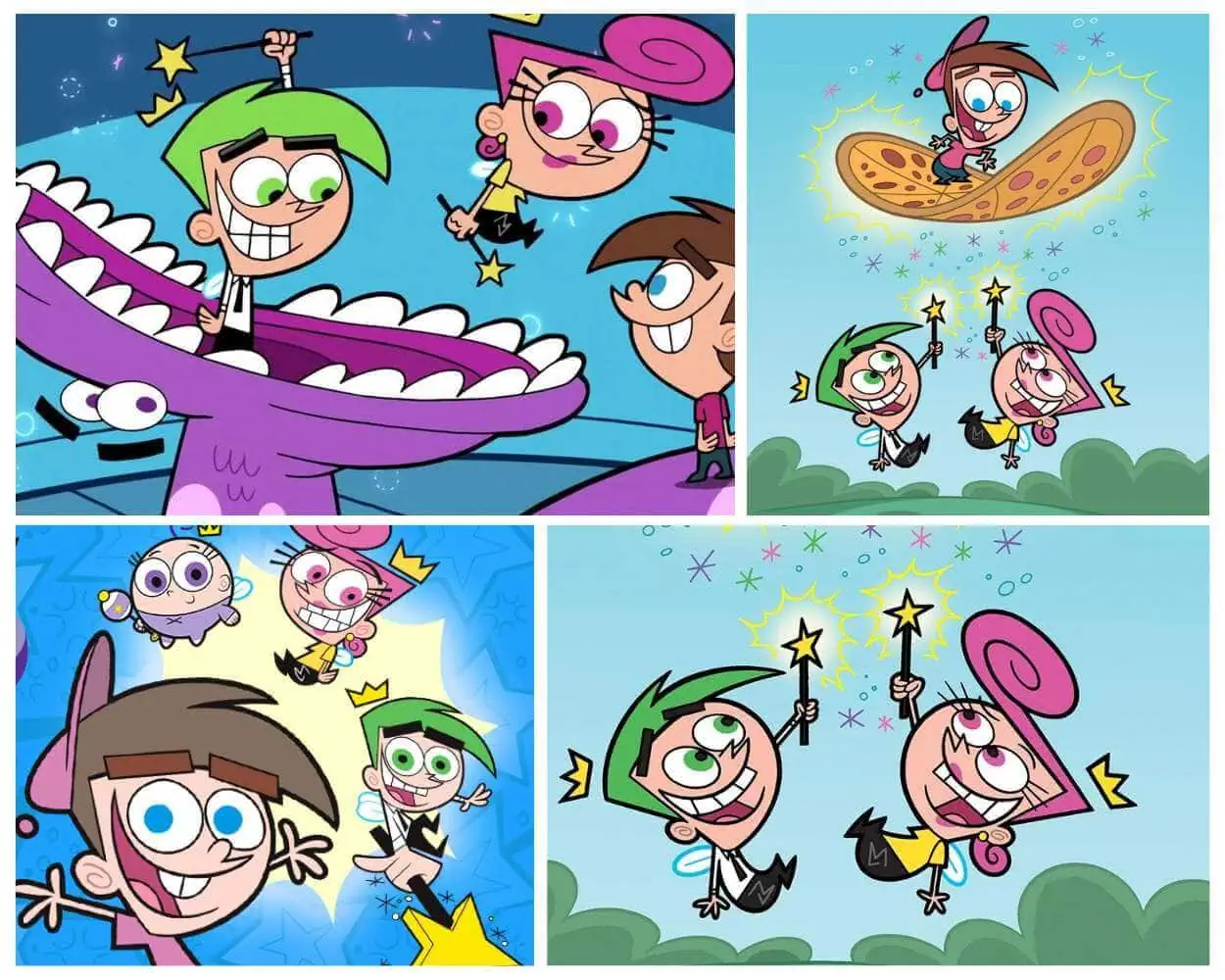
Running for an impressive ten seasons and inspiring several live-action films, “The Fairly Odd Parents” carved a niche in the 2000s cartoon landscape, airing new episodes sporadically until 2017. Despite varied quality, the series remains cherished for its imaginative setting, distinct animation, and witty humor.
When ten-year-old Timmy Turner reaches his breaking point due to his psychotic babysitter and neglectful parents, his life turns around with the arrival of Cosmo and Wanda, his fairy godparents who grant his every wish.
The Powerpuff Girls

“The Powerpuff Girls” is a fondly remembered animated series from the late 90s and early 2000s that left an indelible mark on the era’s children’s television landscape. Created by animator Craig McCracken and produced by Cartoon Network Studios, the show initially ran from 1998 to 2005, captivating audiences with its vibrant visuals, quirky humor, and empowering themes.
The series revolves around three kindergarten-aged girls named Blossom, Bubbles, and Buttercup, who were created in a lab accident by Professor Utonium.
Totally Spies!
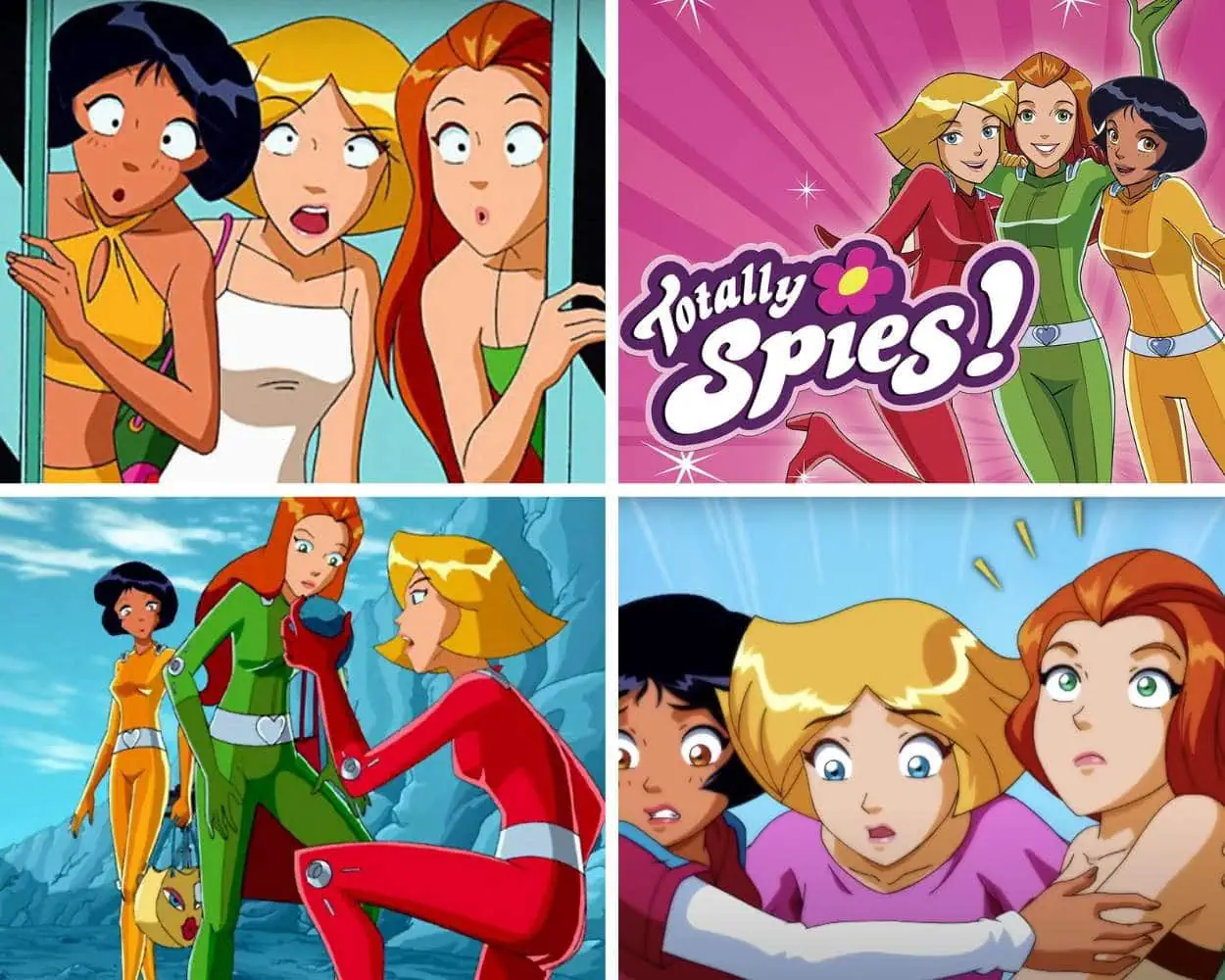
“Totally Spies!” hit the airwaves in 2001 and spanned over six seasons, carving out its niche as an underrated series. It revolves around three teenage girls who juggle roles as ordinary students and international spies, battling a host of high-stakes criminals.
Although it’s not the only spy-themed series on our list, it stands out as a fun one to revisit. With frequent mystery-solving and the struggle of navigating high school life that the three main characters face, “Totally Spies” is both unique and relatable.
Codename: Kids Next Door
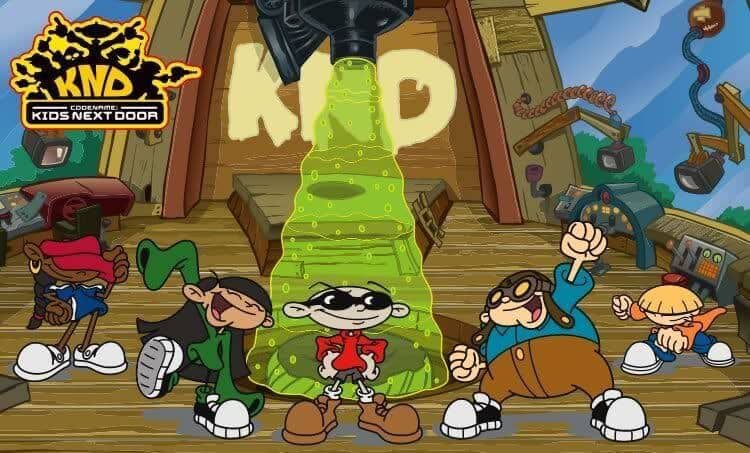
“Codename: Kids Next Door,” a lighthearted series from 2002, stands out for its imaginative, yet naive, child-led storytelling. Following a spy genre theme, the series refers to its characters solely by numerical code names as they engage in counter-espionage against adults.
Spanning six seasons, multiple specials, and two TV movies, “Codename: Kids Next Door” ranks among the longer-running series on our list. Thanks to its distinctive plotlines, animation style, and a truly unexpected ending, it has become a favorite for audiences who watched it growing up.
My Life as a Teenage Robot
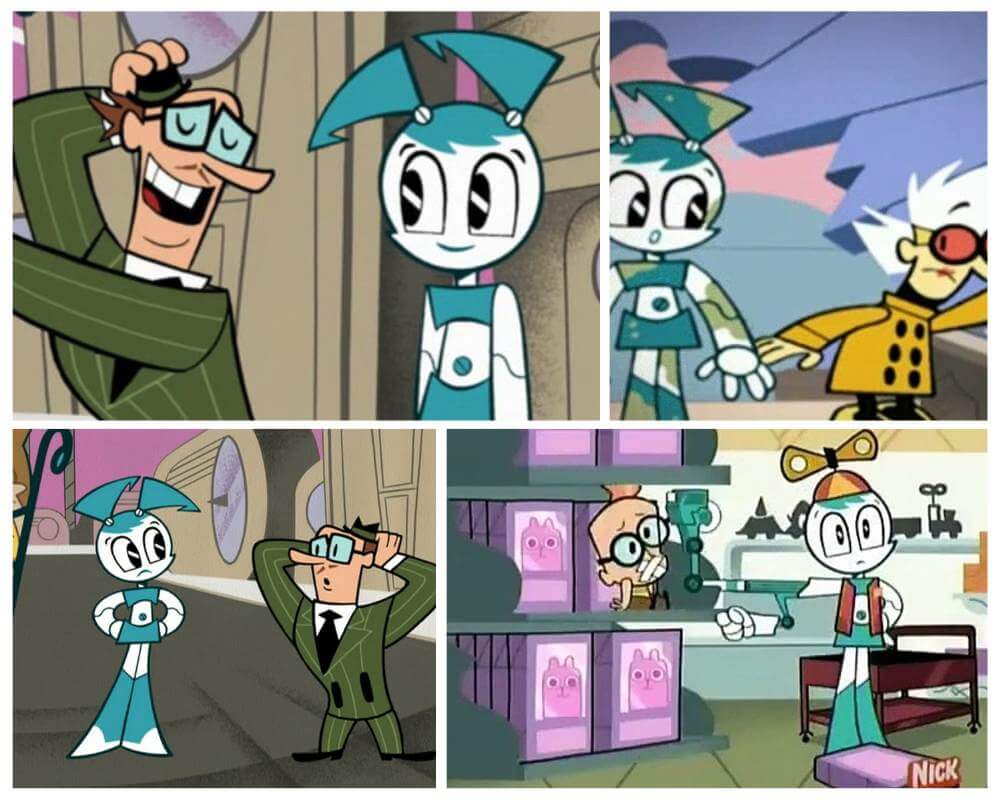
“My Life as a Teenage Robot,” created by Rob Renzetti for Nickelodeon, is a revered animated television series from the early 2000s. The show ran for three seasons, from 2003 to 2009, and was lauded for its unique premise, vibrant animation style, and endearing characters.
Its narrative followed the daily trials and tribulations of XJ-9, or Jenny as she preferred to be called, a powerful state-of-the-art android created by Dr. Noreen Wakeman.
Jenny was designed to protect the Earth, but she’d rather live like a regular teenager, creating a compelling conflict that drove the series.
6teen
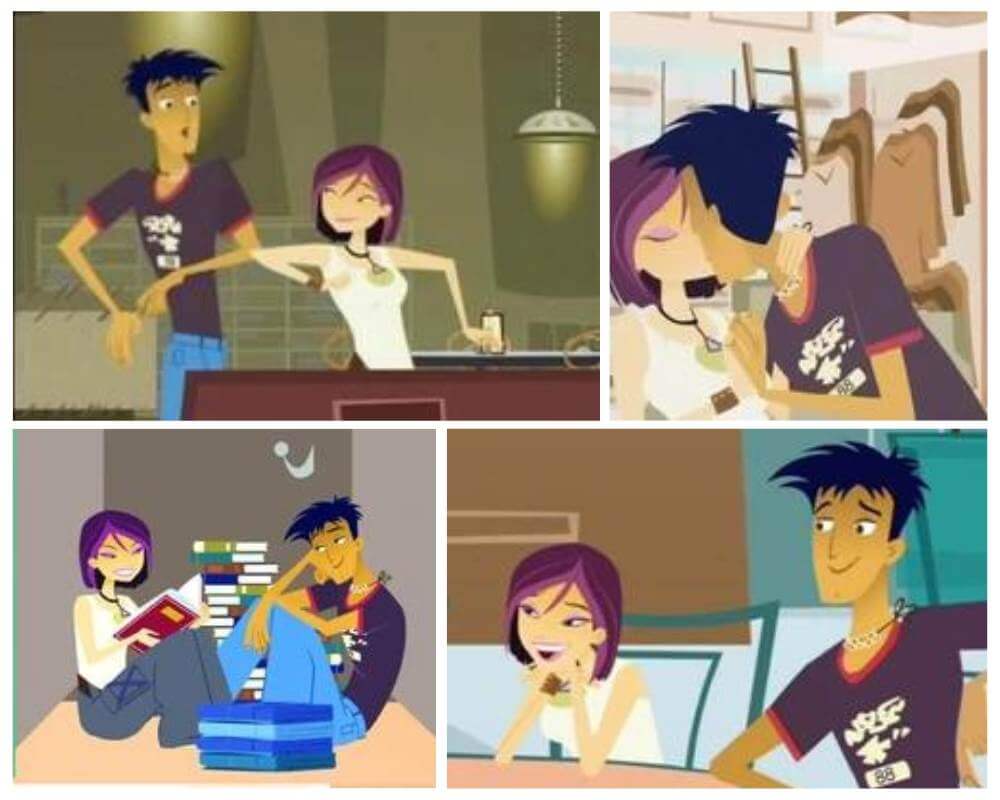
The Canadian cartoon series “6teen” offered younger audiences a digestible perspective on adolescence and its everyday trials. The series, primarily set in the fictional Galleria mall, centers on six teenagers: Jude, Caitlin, Jonesy, Nicole, Jennifer, and Wyatt. Besides delivering expected comedy over its 93 episodes, “6teen” conveys significant messages in a relatable way, underscoring their real-world relevance.
Moreover, Vice noted “6teen” for its praise-worthy diverse cast. This diversity, particularly for its era, enhanced the show’s appeal, marking it as a slice-of-life series with extensive representation.
Fetch! With Ruff Ruffman
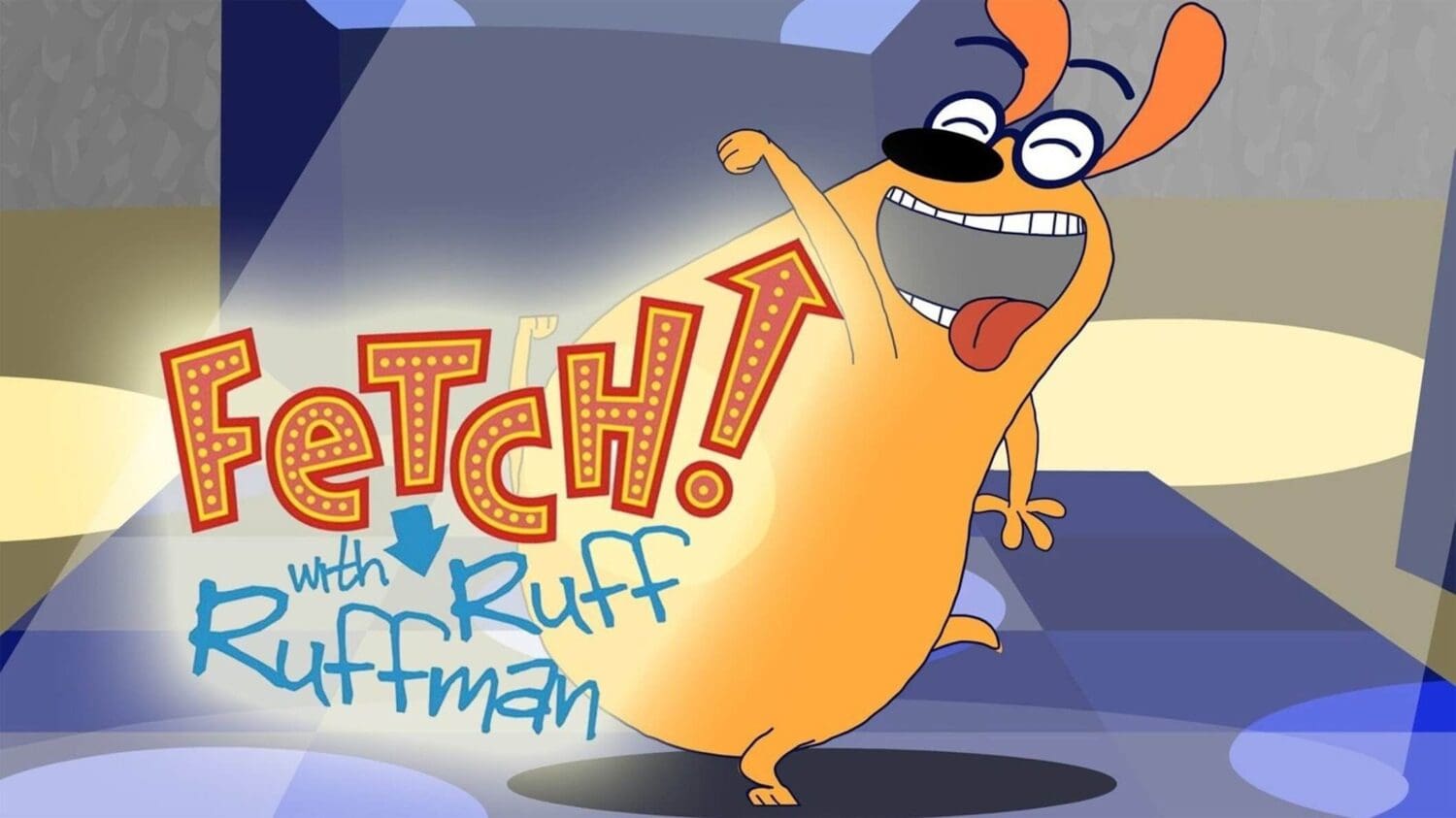
“Fetch! With Ruff Ruffman,” is remembered for its unique mix of 2D animation and live game show thrill, holds a classic status among its viewers. This series launched on PBS in 2006, boasting a substantial run of 100 episodes before its conclusion, known for smartly weaving in pop culture references.
The show, blending animation with live-action, hosted a new cast of child contestants each season. Engaging challenges for contestants filled the episodes, paired with comedic animated segments starring the charmingly sarcastic canine host.
Ed, Edd n Eddy
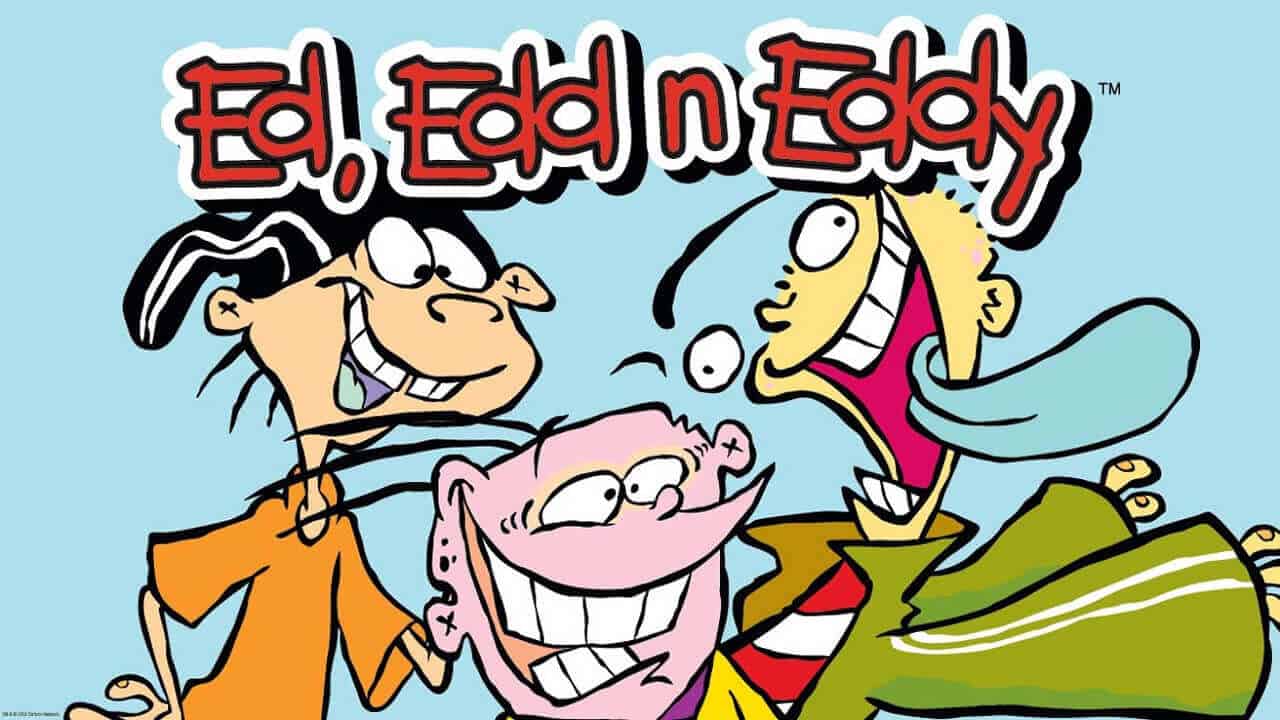
“Ed, Edd n Eddy” radiates eccentricity in all dimensions. The show pairs a simplistic instrumental intro with an unmistakably sketchy animation style, presenting some of Cartoon Network’s most unusual characters.
The titular trio consistently devises plots to deceive their neighborhood peers, all to a lively jazz backdrop. The lead characters’ roguish tendencies and the series’ distinctively weird and surreal humor preserve its appeal, even upon repeated viewings.
What’s New, Scooby Doo?
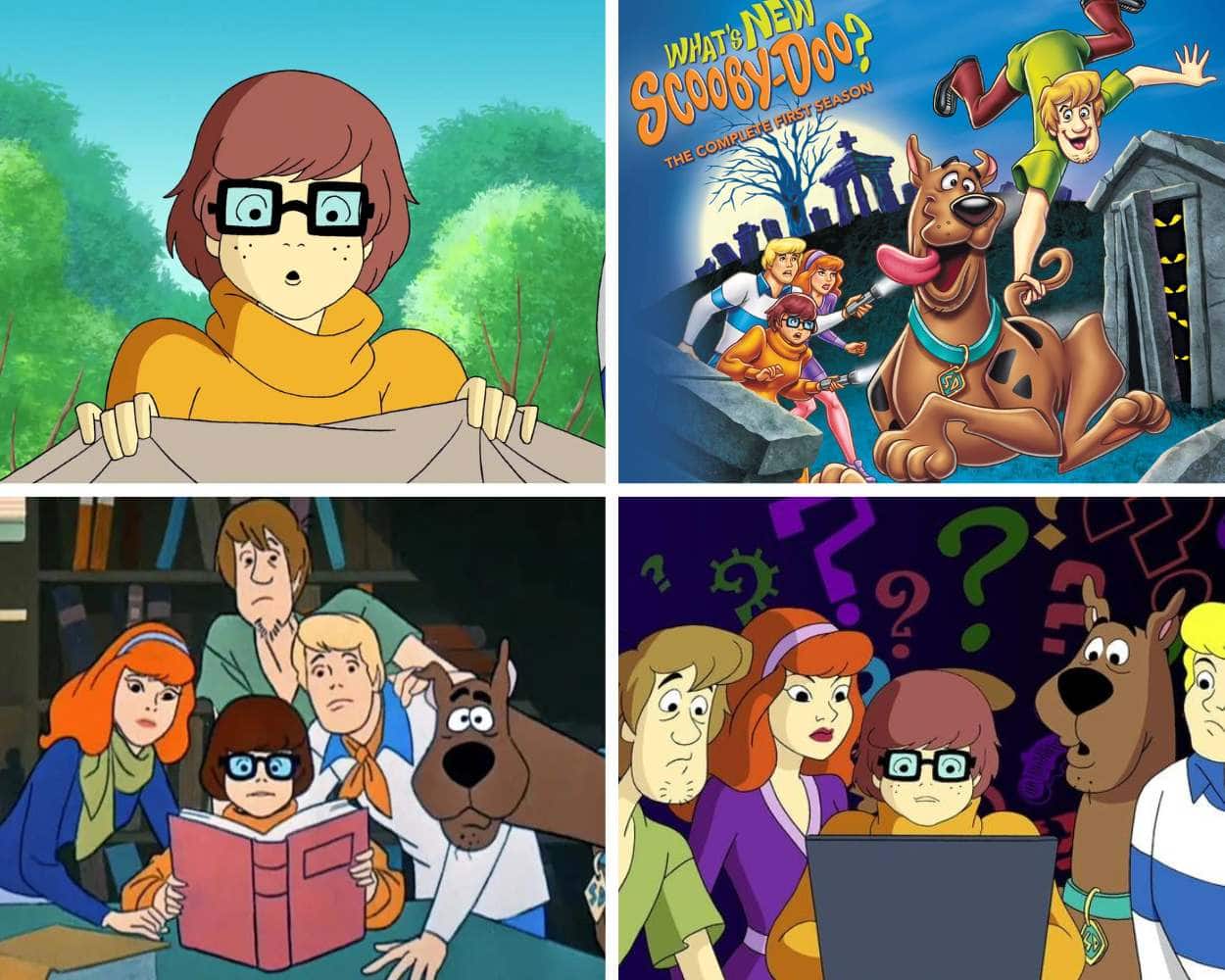
“What’s New, Scooby-Doo?” is a well-remembered and loved animated series from the 2000s that captivated audiences with its distinctive blend of humor, mystery, and lovable characters. The show, which ran from 2002 to 2006, was a modern update on the classic Hanna-Barbera property “Scooby-Doo, Where Are You!” that originally aired in the late 1960s.
One of the aspects that made “What’s New, Scooby-Doo?” such a great childhood show was its ability to retain the original Scooby-Doo charm and flavor while adapting it to the contemporary times.
Kim Possible
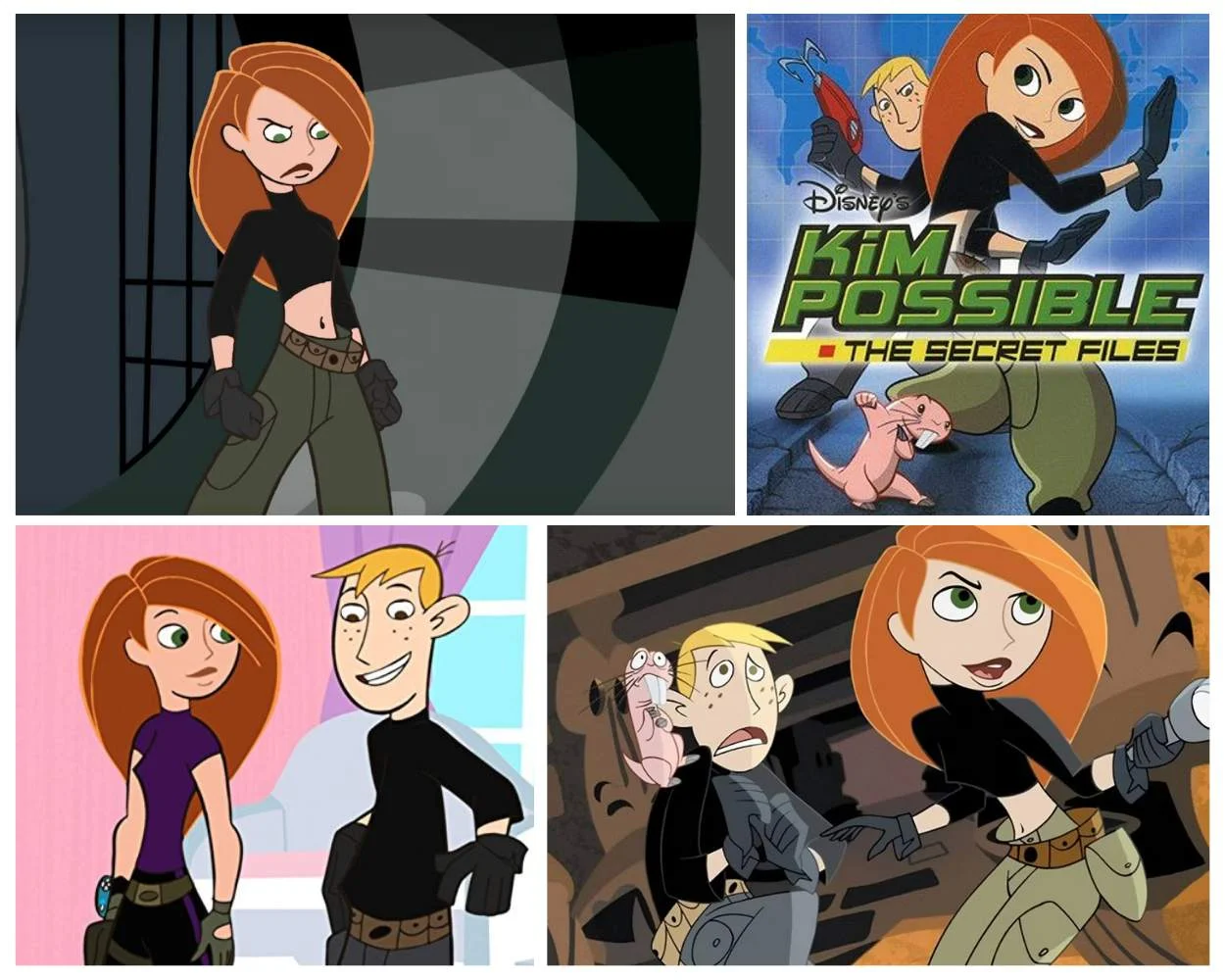
“Kim Possible,” a popular animated television series created by Bob Schooley and Mark McCorkle for Disney Channel, ran from 2002 to 2007. The show stands out as one of the most memorable and beloved animated series from the early 2000s.
It even received two television film adaptations: “Kim Possible: A Sitch in Time” (2003) and “Kim Possible: So the Drama” (2005), with a live-action film adaptation released in 2019.
The series follows the life of Kim Possible, a high school student who, in her spare time, saves the world from super villains.
The Batman
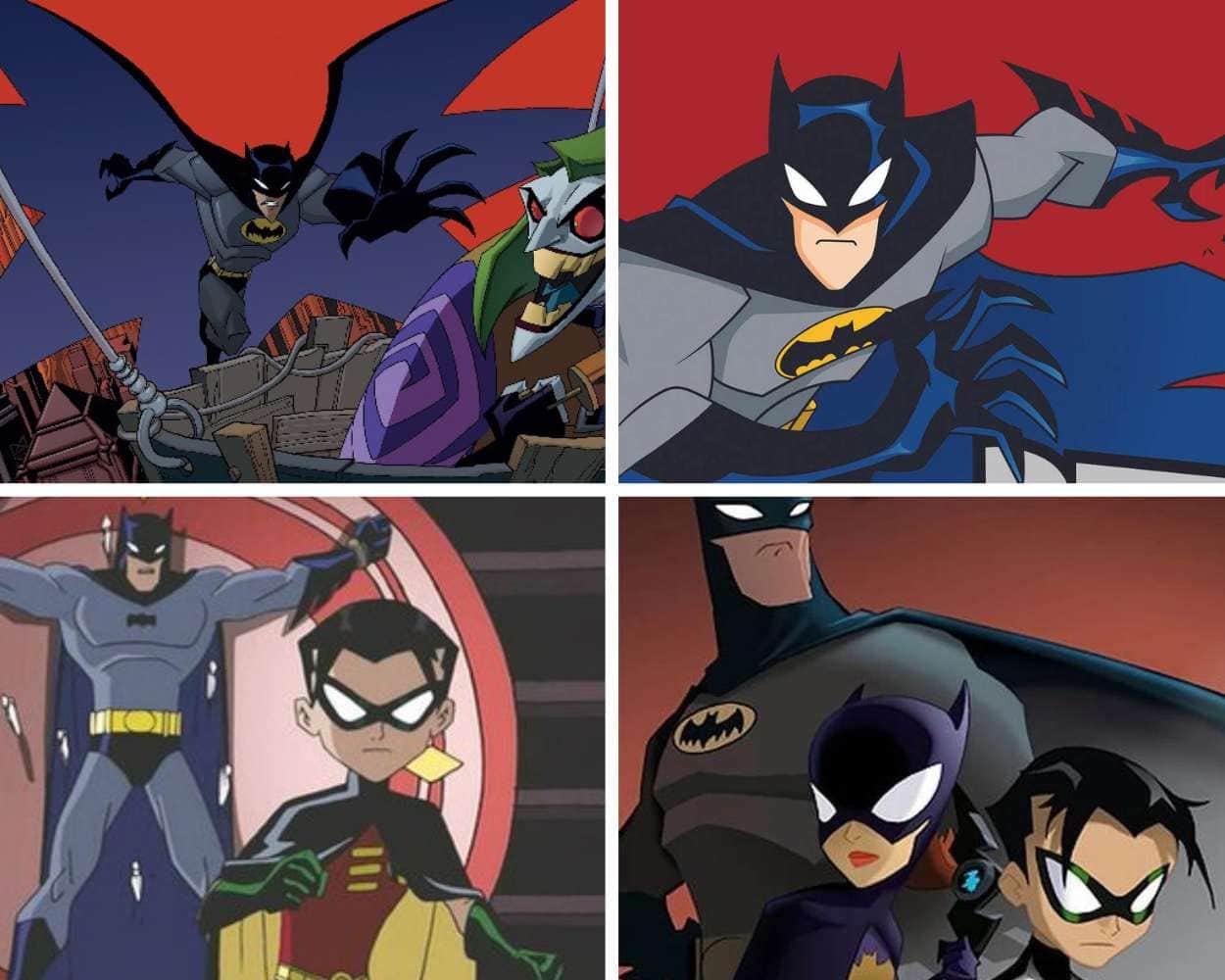
Batman, the famed Caped Crusader, has a sprawling multimedia portfolio that spans across numerous movies, comic books, video games, and television series, an array that can seem overwhelming even to the most ardent fans.
One noteworthy representation from the 2000s is the animated series “The Batman”. While it might not clinch the top spot for the ultimate animated portrayal of Batman, this show still carved out a special place with its unique interpretation of the Dark Knight’s adventures.If you haven’t explored “The Batman” yet, it’s certainly a show from the 2000s worth revisiting.
Ben 10
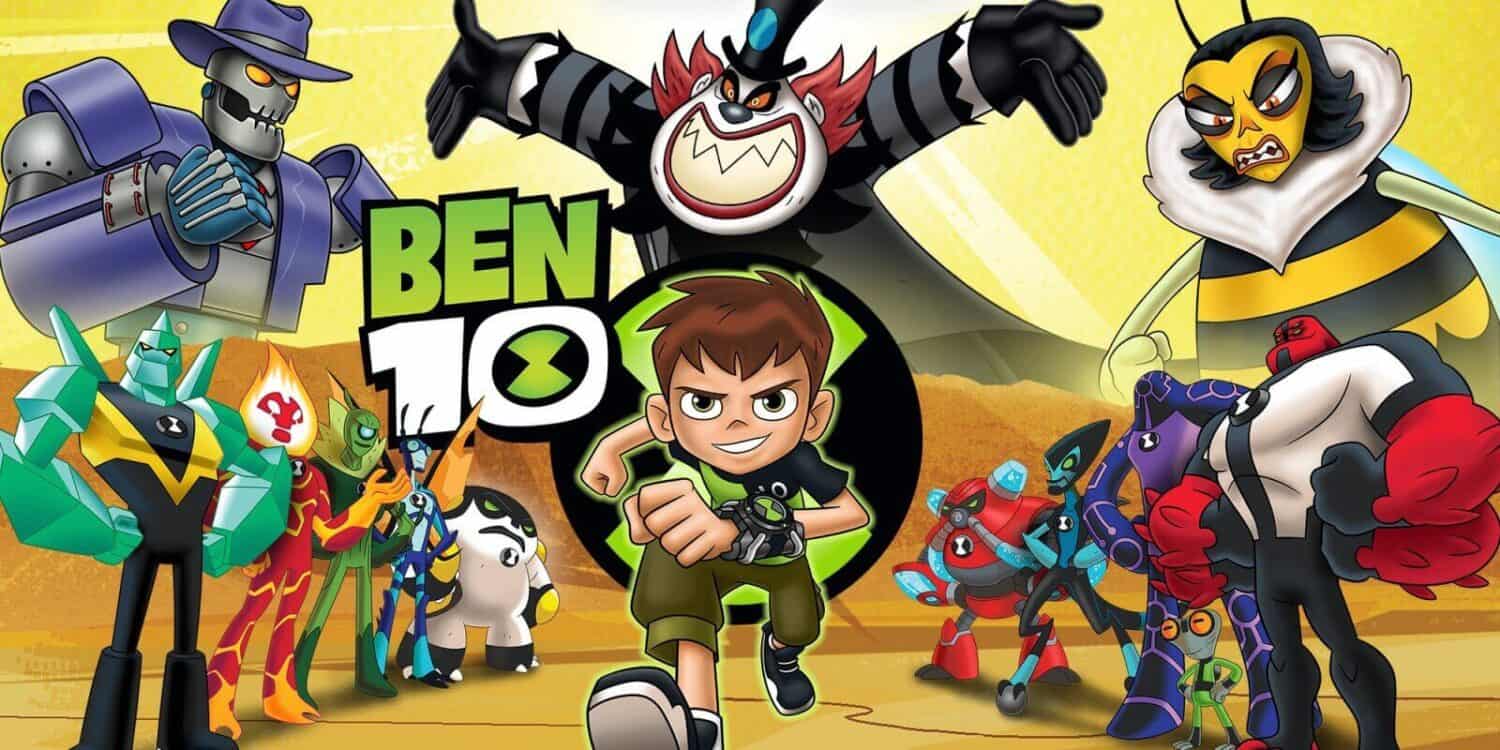
“Ben 10” burst onto the scene in 2005, captivating viewers with its thrilling action sequences and imaginative alien designs. The series centered around the ten-year-old protagonist, aptly named Ben Tennyson, whose life takes a remarkable turn when he stumbles upon a mysterious alien device hidden deep within the woods.
This encounter grants him an extraordinary ability: the power to transform into ten distinct alien forms.
The show’s original run spanned four seasons, fueled by its compelling blend of science fiction storytelling, moments of comedy, and an engaging plot.
The Marvelous Misadventures of Flapjack
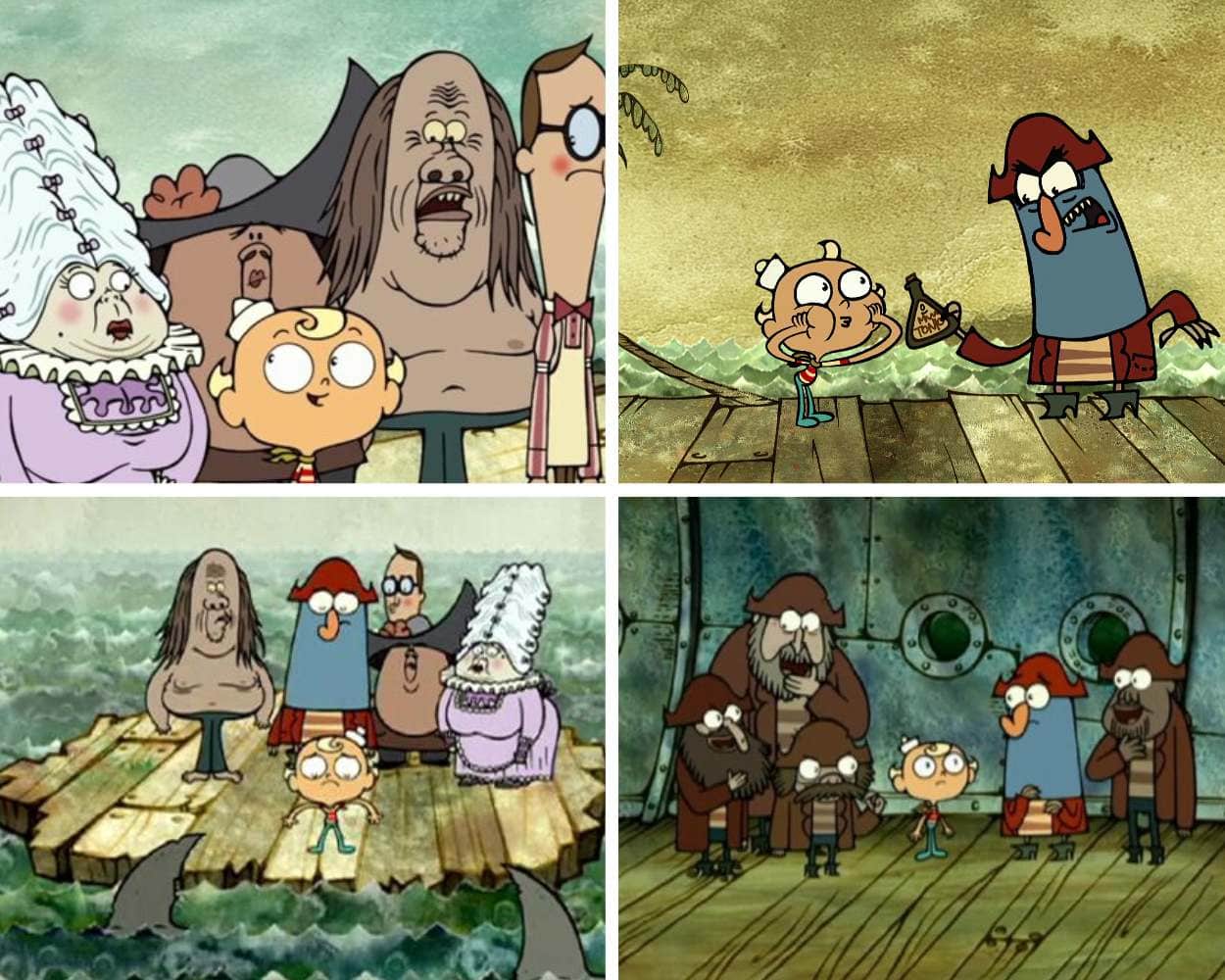
J.G. Quintel, before crafting the cherished and quirky “Regular Show,” first demonstrated his writing prowess on the 2008 show, “The Marvelous Misadventures of Flapjack.” The similarities between both projects shine through their enduringly popular odd and peculiar vibes.
Set in and around Stormalong Harbor, the series explores the wild escapades of a character trio. Even though “The Marvelous Misadventures of Flapjack” presents some adult themes and strikingly eerie visuals, it evolved into a universally appealing show.
The Grim Adventures of Billy & Mandy
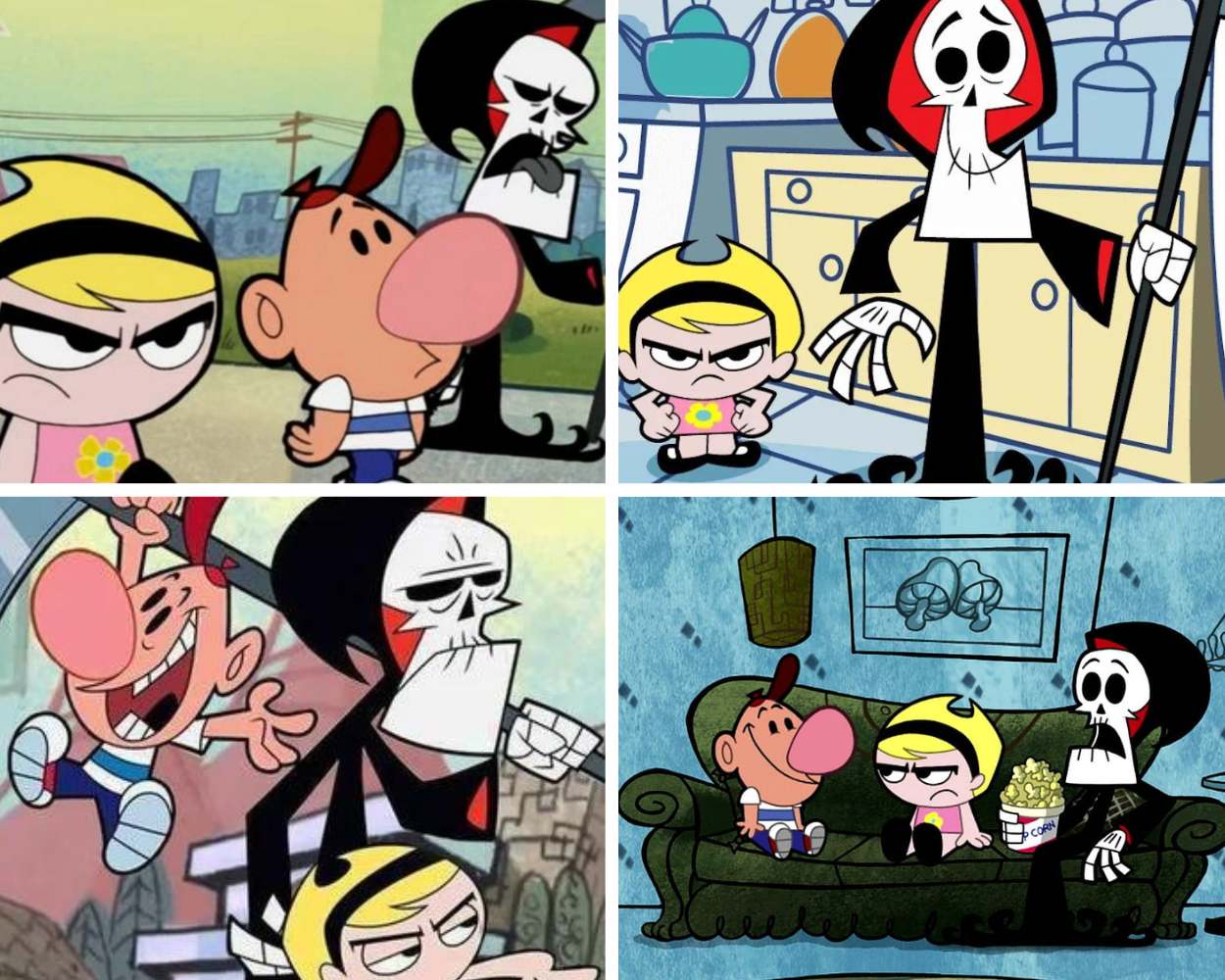
“The Grim Adventures of Billy & Mandy,” a show brimming with dark humor featuring the Grim Reaper as a main character, resonates fondly with its audience. It hit the airwaves in 2001, running for an impressive six seasons and capturing the 2000s’ macabre trend in children’s media.
The narrative centers on the simple-minded Billy, his sarcastic sister Mandy, and the Grim Reaper who begrudgingly becomes their lifelong friend. Despite Grim’s frequent plots to end their lives, the duo consistently embroils him in their weekly escapades, highlighting their contrasting personalities and motives.
Fillmore!
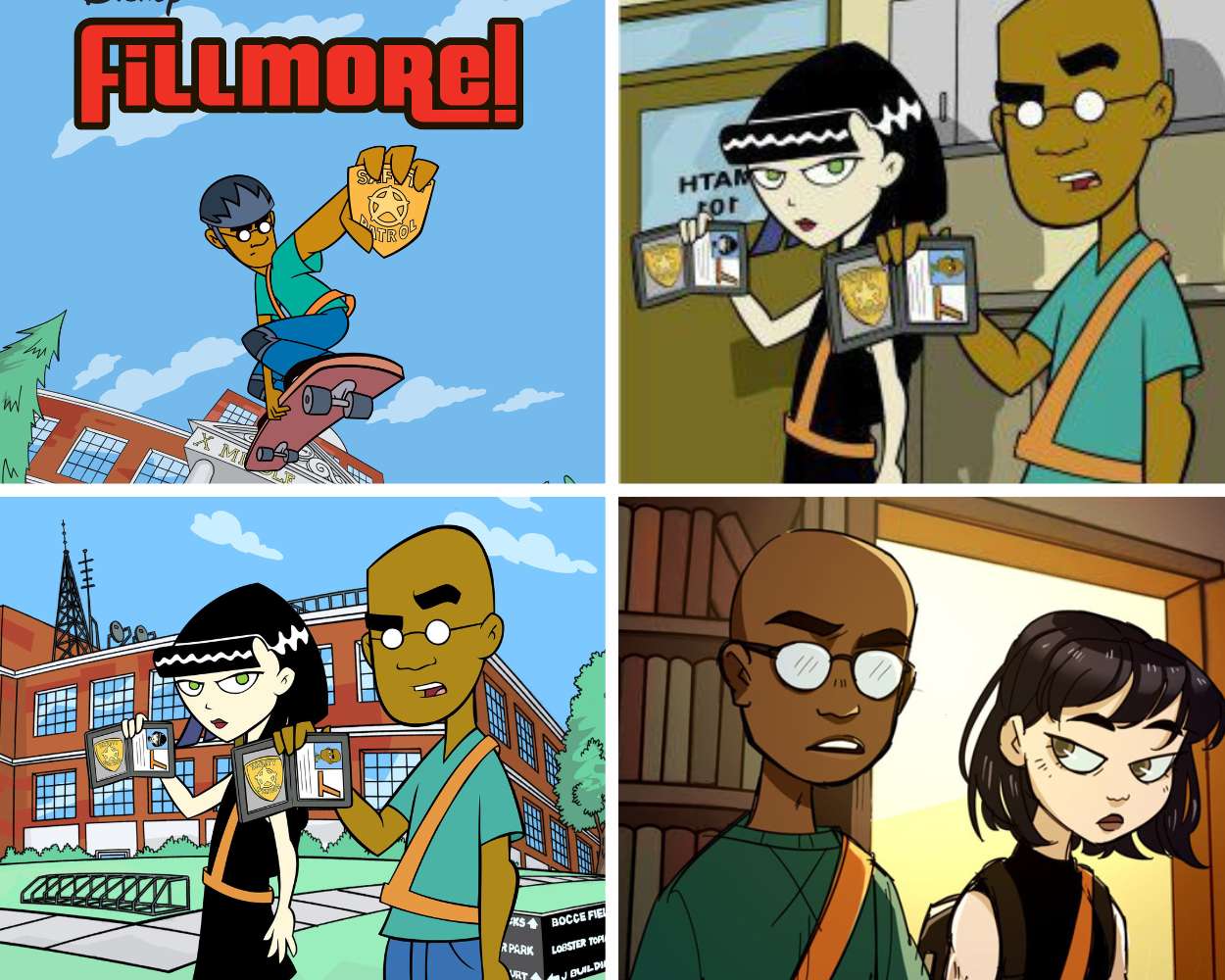
The 2002 series “Fillmore!” introduced the crime mystery genre to many young viewers, marking Scott Gimple’s debut as an executive producer before he took the reins of “The Walking Dead.” This series intrigued audiences with gripping plotlines and numerous nods to its inspirational media.
The series unfolds in a Minneapolis school, following protagonist Cornelius Fillmore and his investigative ally, Ingrid Third. They unravel the mysteries frequently occurring on school grounds. Even though the narratives keep a light-hearted tone fitting for its audience, the show avoids over-the-top comedy, treating its content with genuine respect.
Redwall
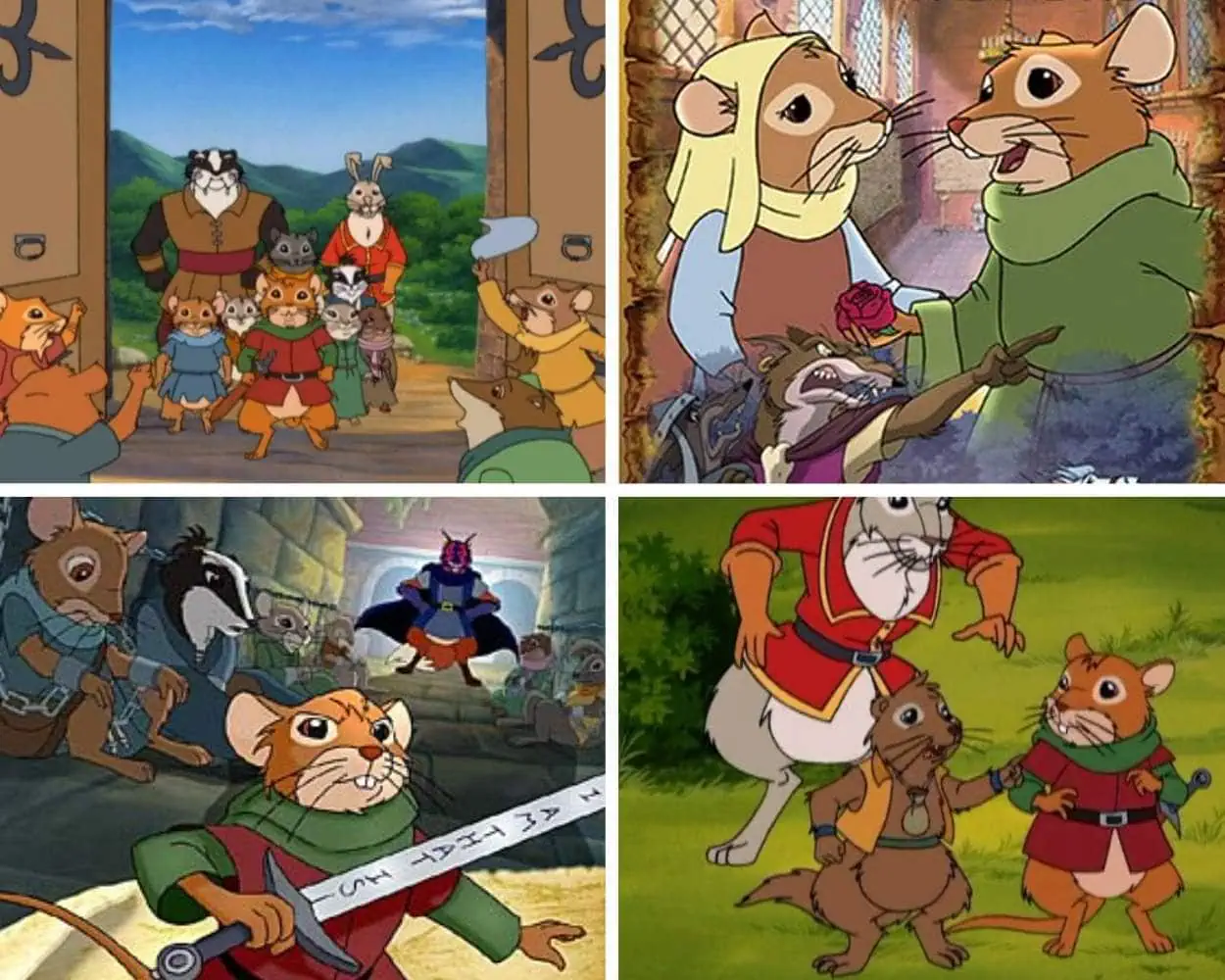
Originating from Canada, “Redwall” unequivocally stood out among early 2000s children’s shows. This animation, based on a cherished novel series, plunged viewers into a medieval fantasy realm, telling the tale of a young mouse’s transformation into a formidable warrior amidst conflict.
“Redwall” distinguished itself by fearlessly delving into its setting’s darker aspects. The series boldly portrayed fantasy warfare, sometimes crossing lines with shockingly harsh depictions. These elements intensified the narrative, ensnaring audiences with its compelling storytelling.
The Weekenders
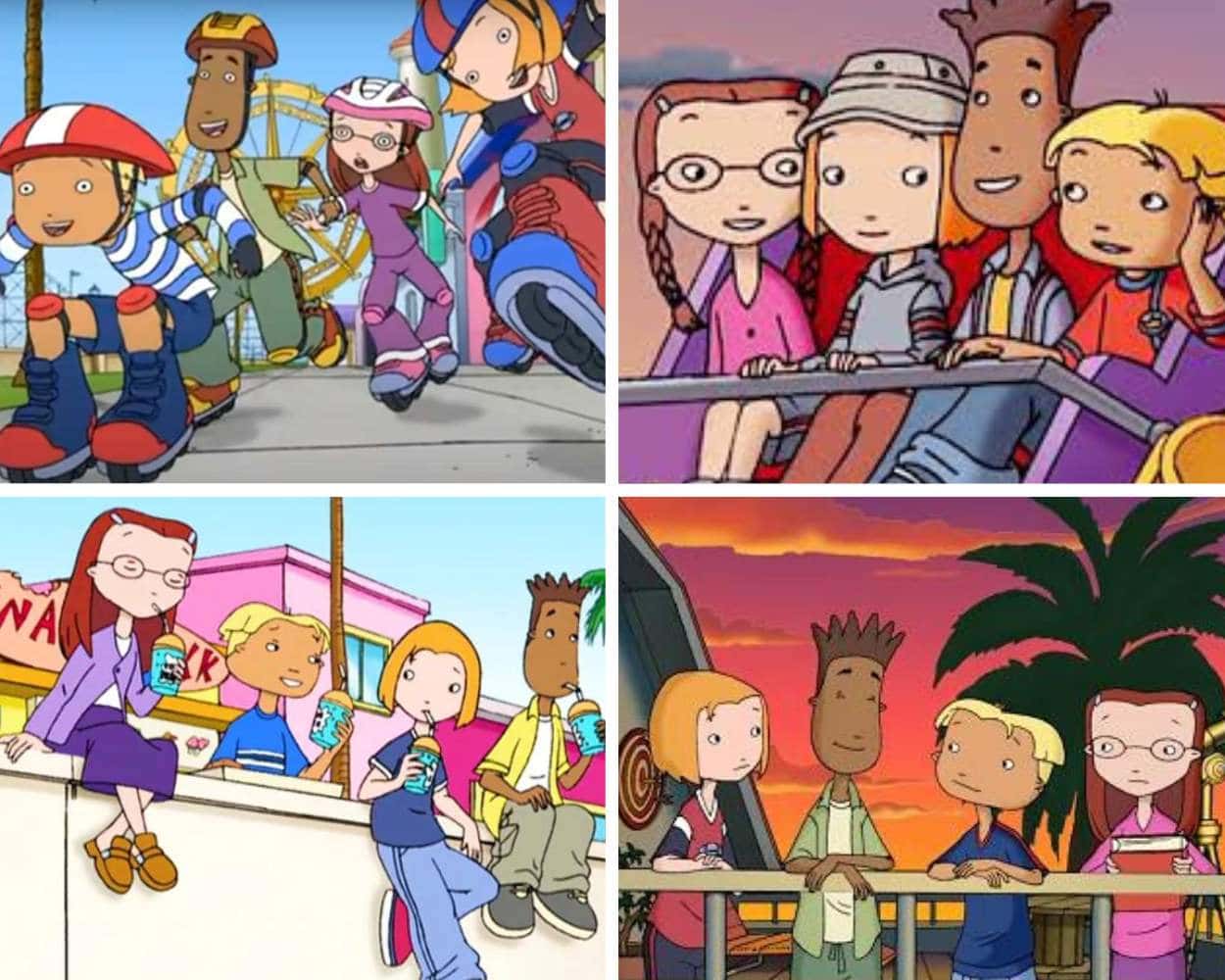
“The Weekenders” strayed from typical fantastical children’s cartoon narratives, choosing relatable stories focused on four tween protagonists’ shared experiences. Even after airing for four seasons over four years, it didn’t garner the deserved recognition compared to other shows.
The title “The Weekenders” profoundly influenced its storytelling, with each episode’s conflict unravelling and resolving over a single weekend. Though lacking high-octane scenes, the series compensated with potent narratives providing real-world lessons, treating its intended audience without condescension.
Teen Titans
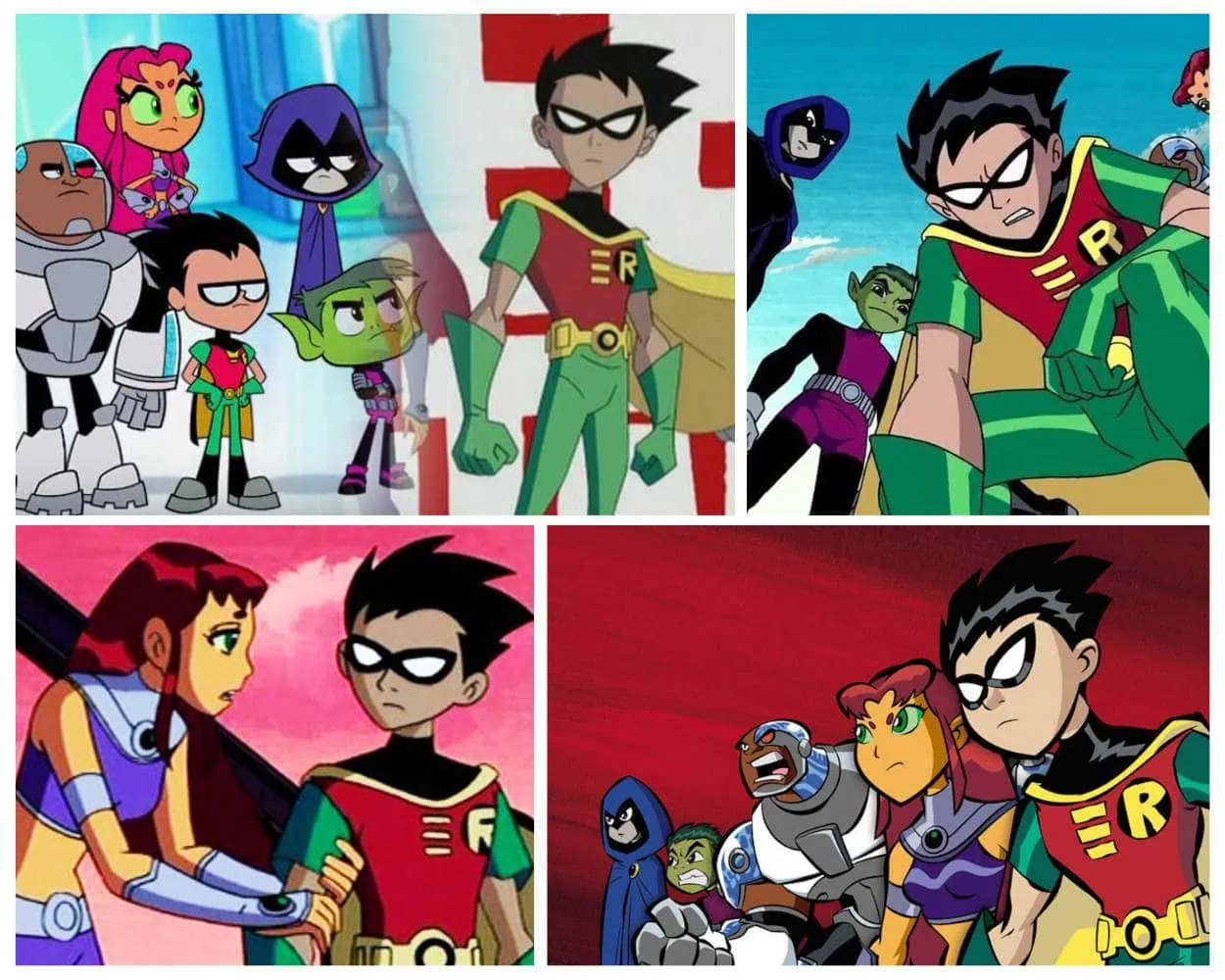
“Teen Titans” hit Cartoon Network’s airwaves in 2003, quickly capturing viewers’ hearts. Across five seasons, the original series earned acclaim for its expertly penned stories and atmospheric tone, becoming a favorite among D.C. aficionados and general audiences.
With its unforgettable intro and fearsome villains, “Teen Titans” presented the D.C. universe to a younger demographic in an enthralling fashion. Though its successor, “Teen Titans Go!”, couldn’t replicate its predecessor’s brilliance, the original series has stood the test of time, securing its status as a timeless classic.
SpongeBob SquarePants

“SpongeBob SquarePants,” a beloved 21st-century cartoon series, debuted in 1999 and continues to enchant audiences with over two decades of episodes and films. Creator Stephen Hillenburg, leveraging his experience from “Rocko’s Modern Life,” built the imaginative Bikini Bottom universe.
This series features the endearing fry cook, SpongeBob, voiced by Tom Kenny, and a cast of surreal undersea characters. Their witty sarcasm sets the show apart, captivating fans across all ages.
Samurai Jack
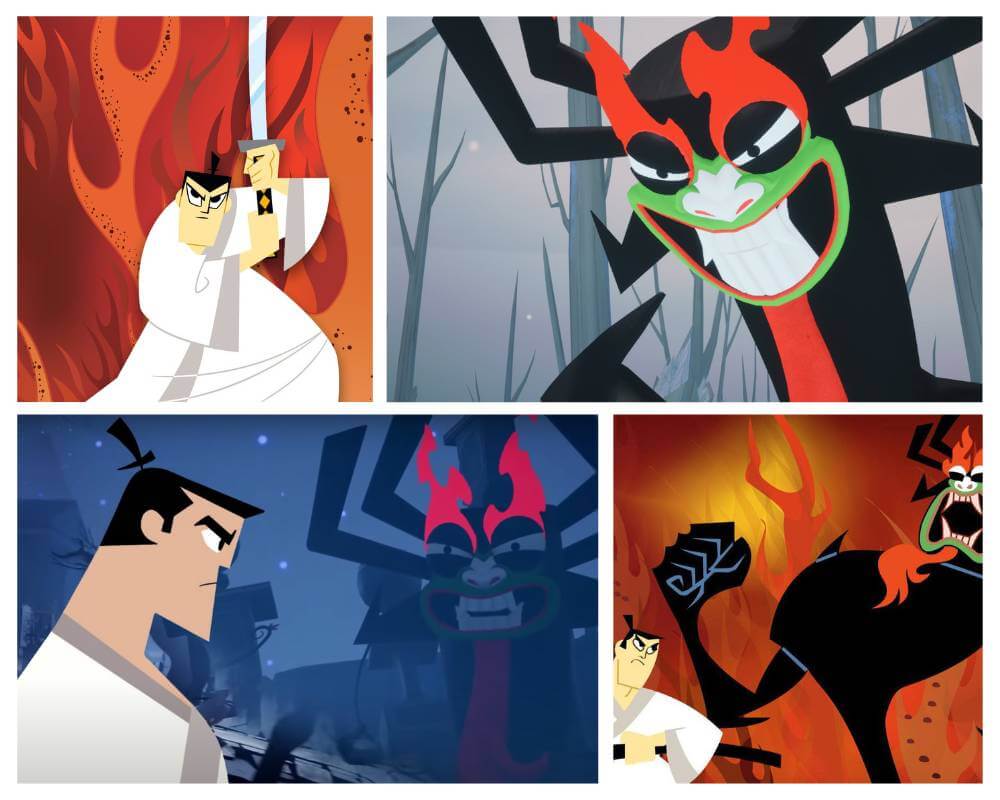
Samurai Jack holds a special place in the hearts of many as a beloved childhood cartoon. It captivated audiences with its unique blend of stunning visuals, compelling storytelling, and timeless themes. The series followed the epic journey of a brave samurai warrior who was flung into the future by an evil sorcerer, Aku.
Tasked with defeating Aku and finding a way back to his own time, Samurai Jack faced countless challenges and adversaries throughout his quest. What made Samurai Jack stand out was its distinct art style, characterized by its striking use of color, atmospheric backgrounds, and fluid animation.
Courage the Cowardly Dog
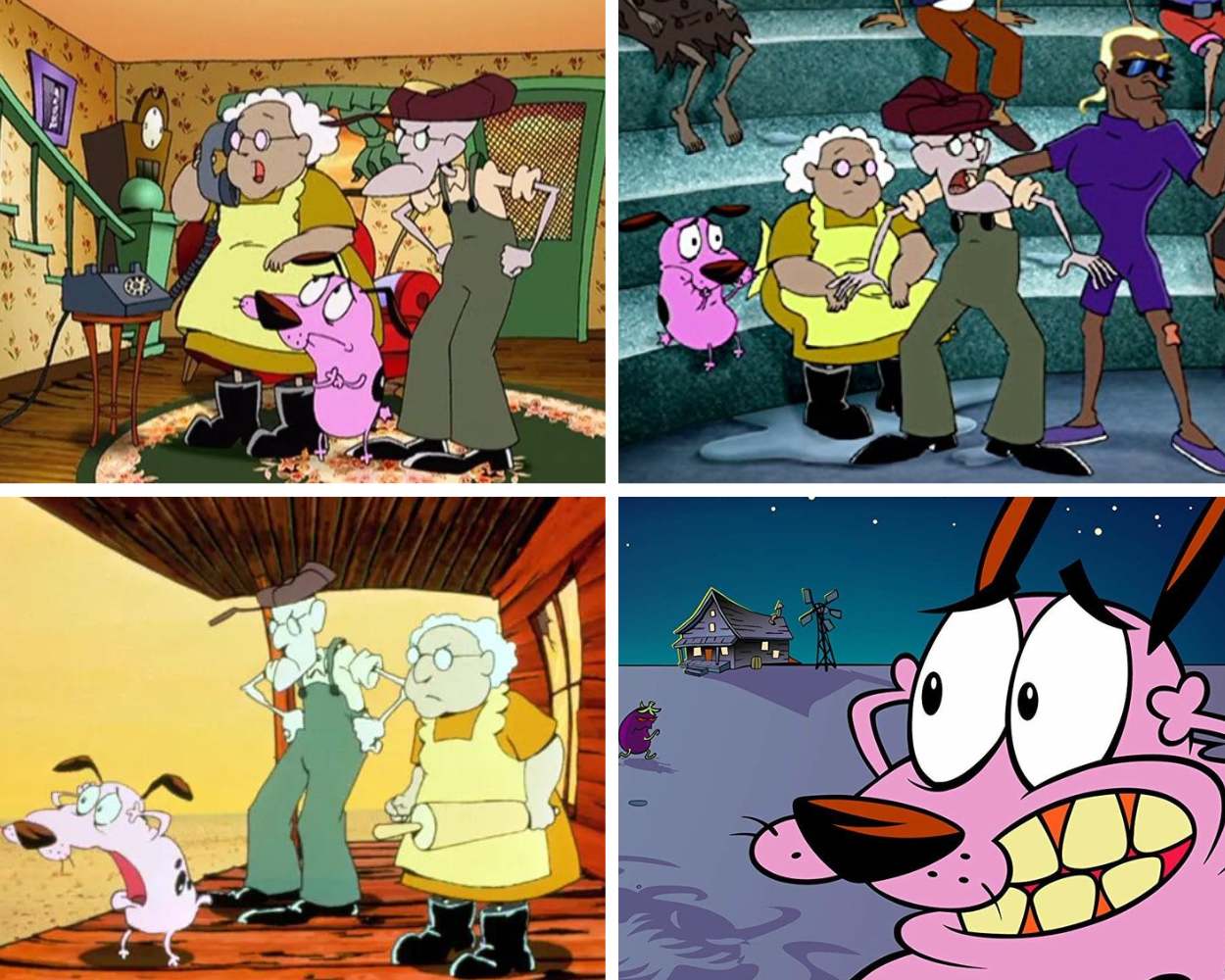
Courage the Cowardly Dog stands as one of the most memorable and beloved cartoons from the 2000s, providing a unique and thrilling experience for kids of that era. The show masterfully combined elements of comedy, horror, and heartwarming moments to create a truly captivating series.
At the heart of Courage the Cowardly Dog is the titular character, a small and timid pink dog who lives in the middle of Nowhere with his elderly owners, Muriel and Eustace Bagge. The show followed Courage as he faced a myriad of supernatural and bizarre encounters, often having to summon his inner courage to protect his family and overcome his fears.
Justice League
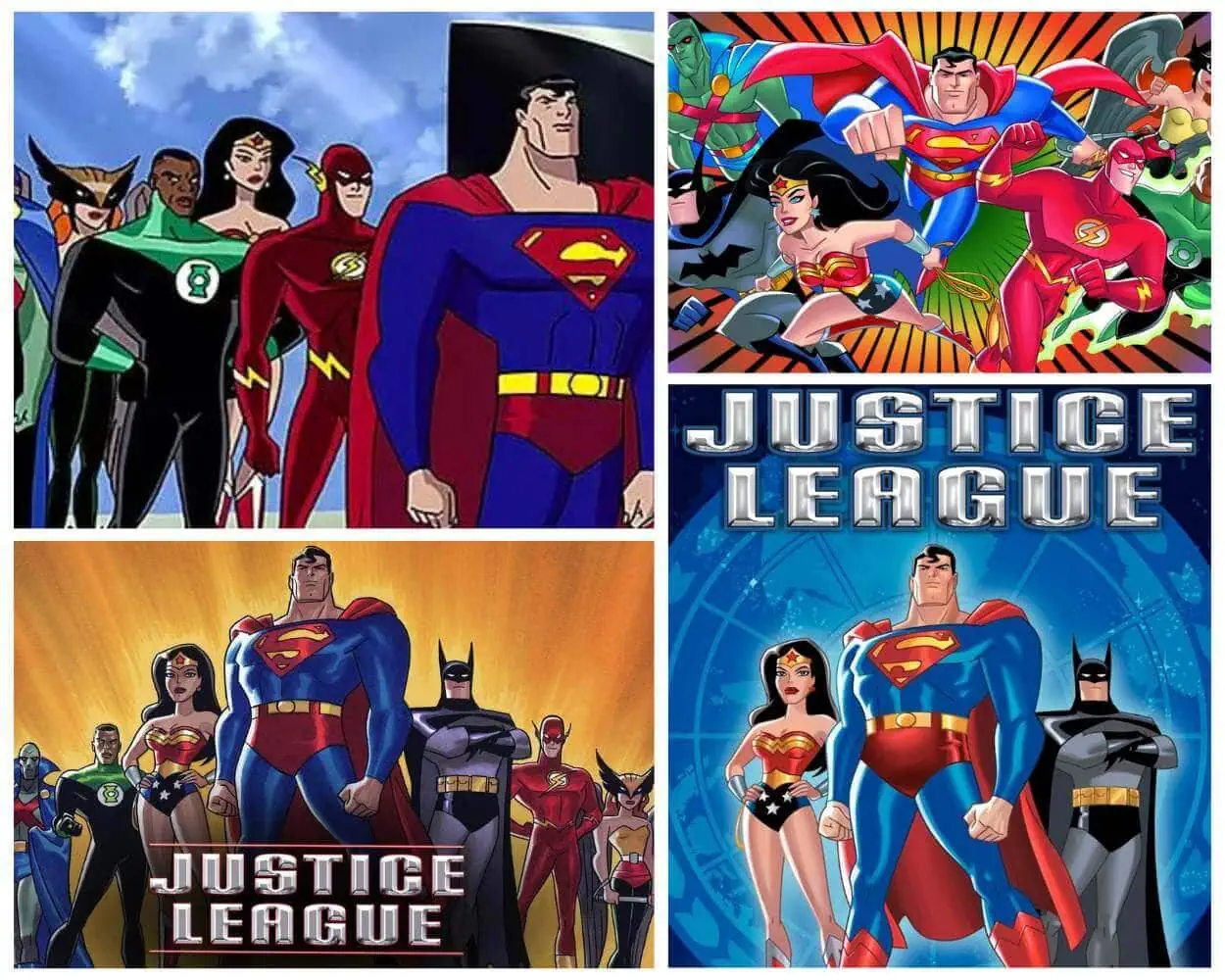
The Justice League cartoon from the 2000s holds a special place in the hearts of many as a popular kids’ T.V. show of that era. It brought together the iconic superheroes from the D.C. Comics universe, creating a dynamic and action-packed series that captivated audiences of all ages.
The show featured a star-studded lineup of superheroes, including Batman, Superman, Wonder Woman, The Flash, Green Lantern, Martian Manhunter, and Hawkgirl, among others. Each character brought their unique abilities, personalities, and struggles to the table, creating a diverse and compelling team dynamic.
The Spectacular Spider-Man
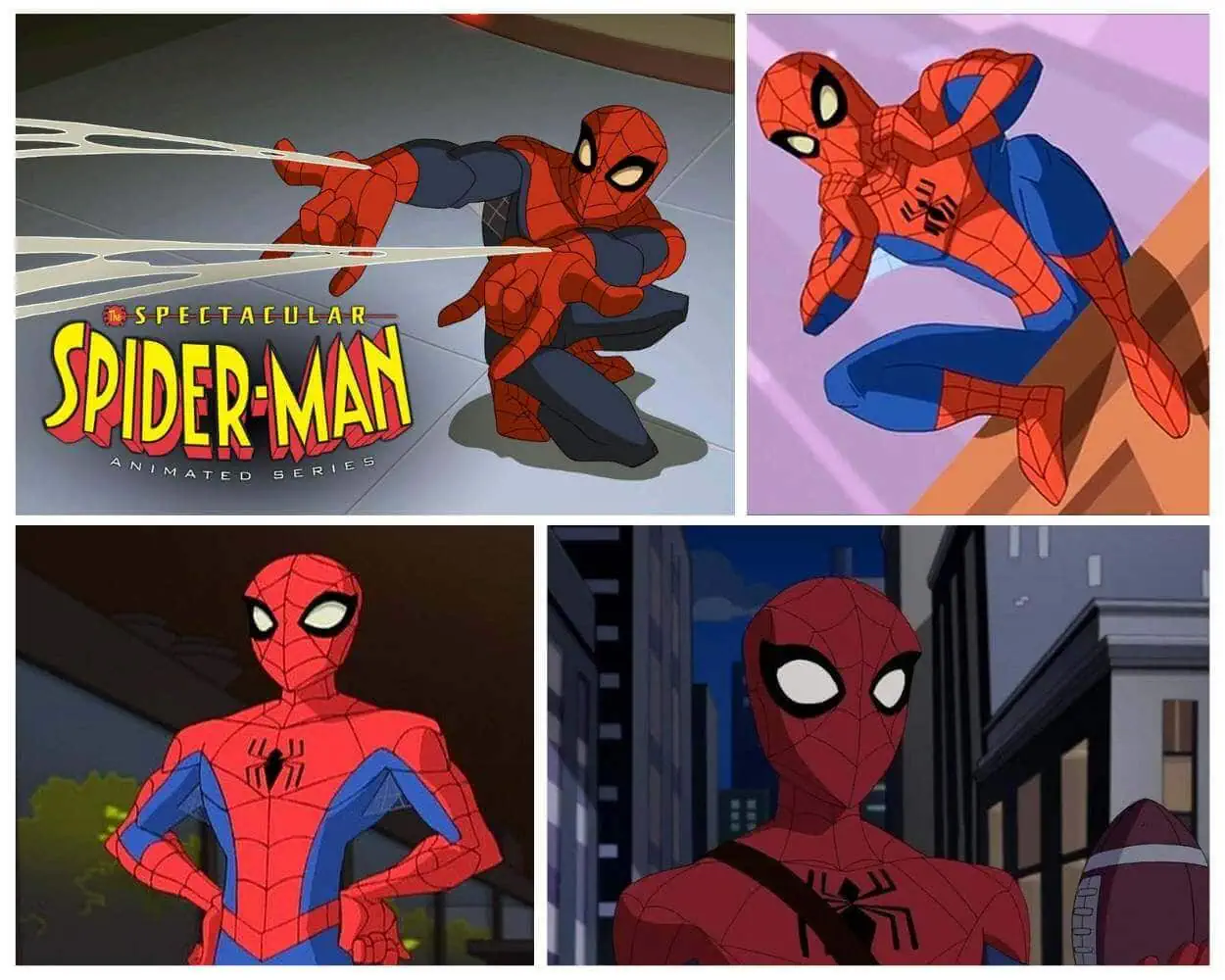
The Spectacular Spider-Man stands as one of the most popular kids’ cartoons of the 2000s, captivating audiences with its thrilling storytelling, dynamic animation, and faithful depiction of the iconic web-slinger.
The series brought to life the adventures of Peter Parker, a high school student who juggles his daily life while donning the persona of Spider-Man to protect the city of New York from a host of formidable villains. What set The Spectacular Spider-Man apart was its ability to strike a perfect balance between the action-packed superhero battles and the relatable struggles of Peter Parker as a teenager.
Avatar: The Last Airbender
![]()
Revisiting this Nickelodeon classic is worth your while, even if you didn’t grow up watching it. Its fantastic worldbuilding, anime-inspired animation, and incredibly well-written storyline make it a compelling experience. In this fictional fantasy world, certain individuals possess the remarkable ability to manipulate the elements themselves. Taking center stage is the Avatar, who is entrusted with the important task of bringing balance to the war-torn world and uniting the four existing nations.
Since the original series concluded in 2008, the franchise has expanded with a live-action film called “The Last Airbender,” a spin-off series titled “The Legend of Korra,” and the potential for a new live-action series.